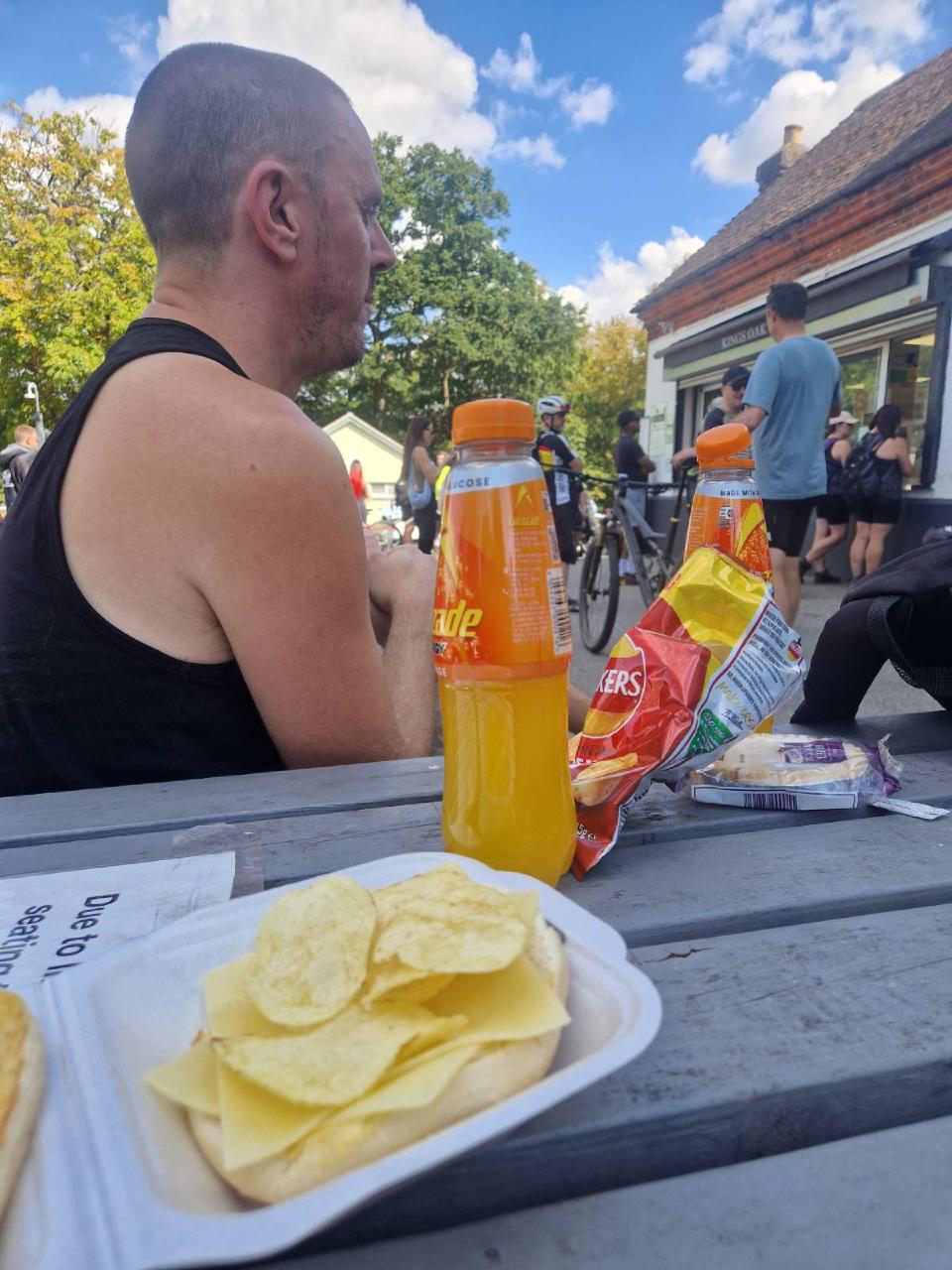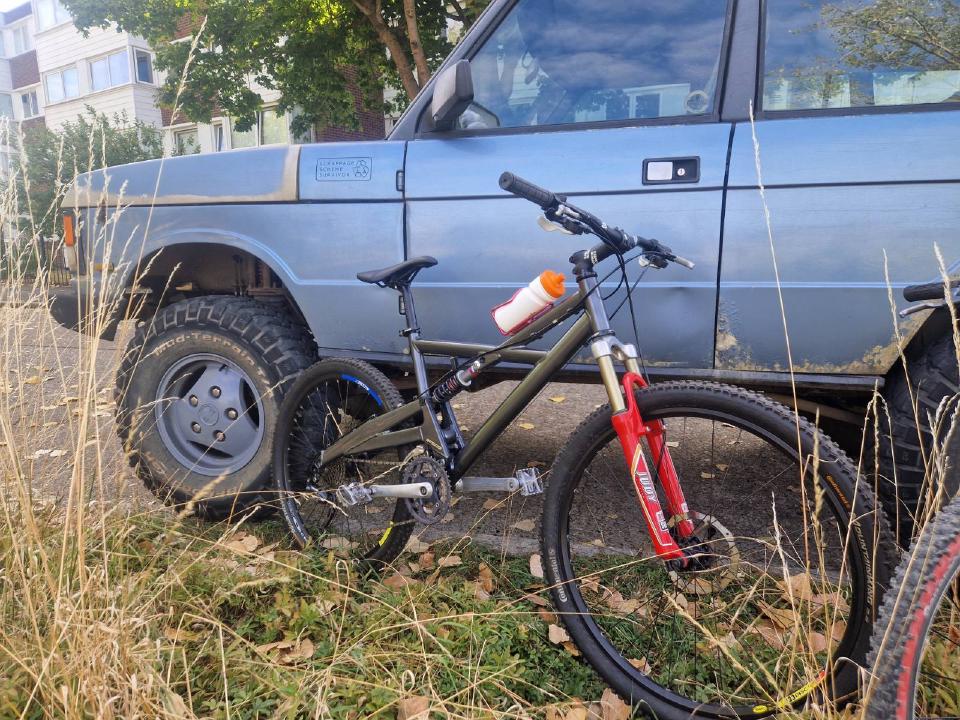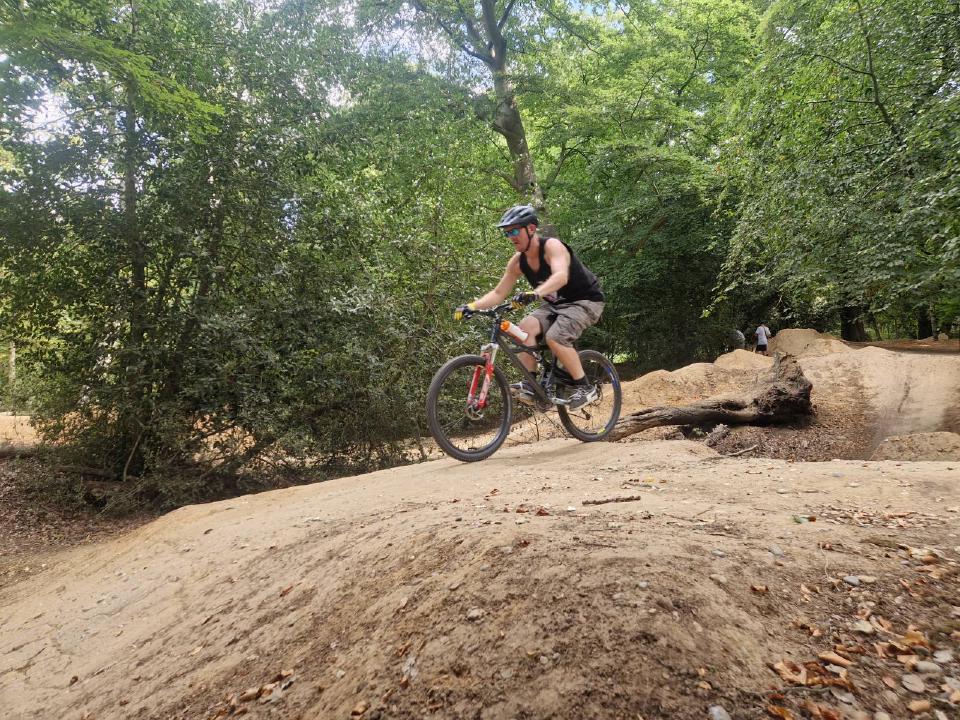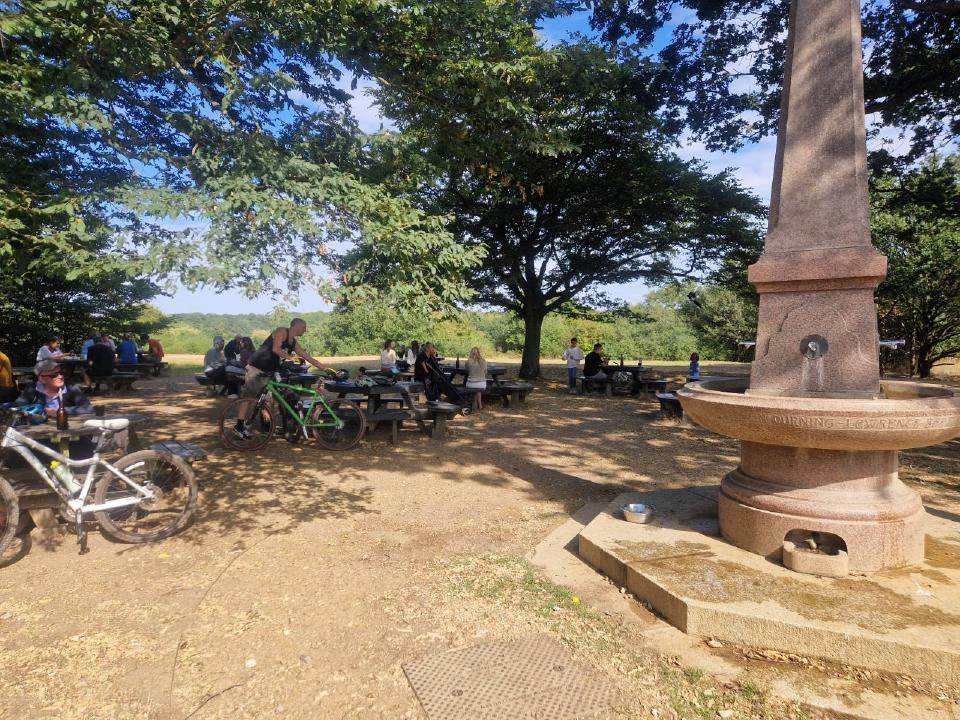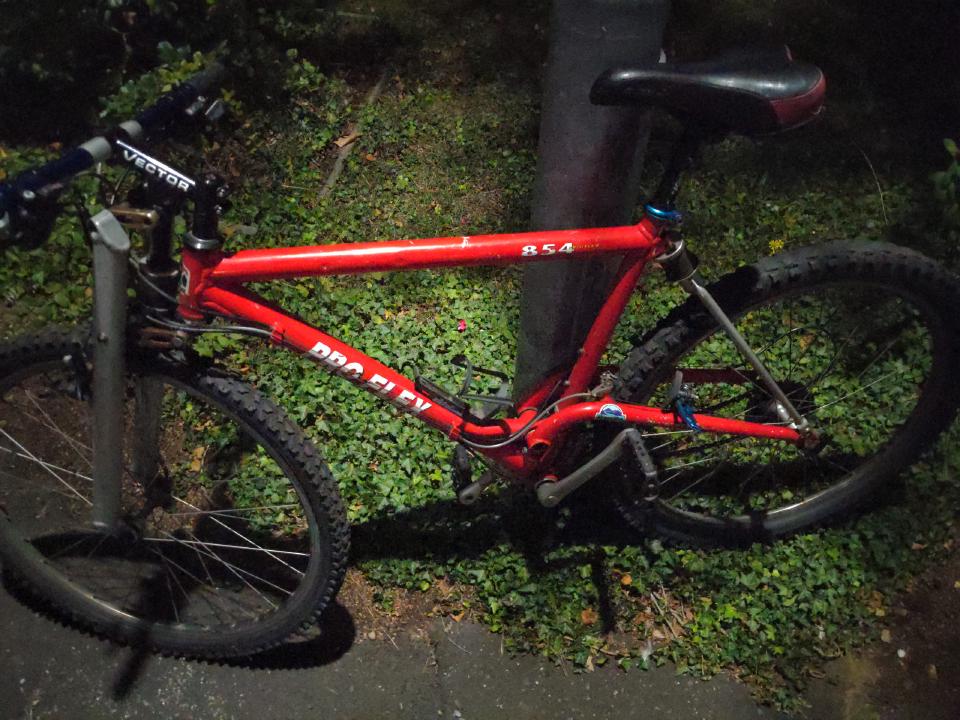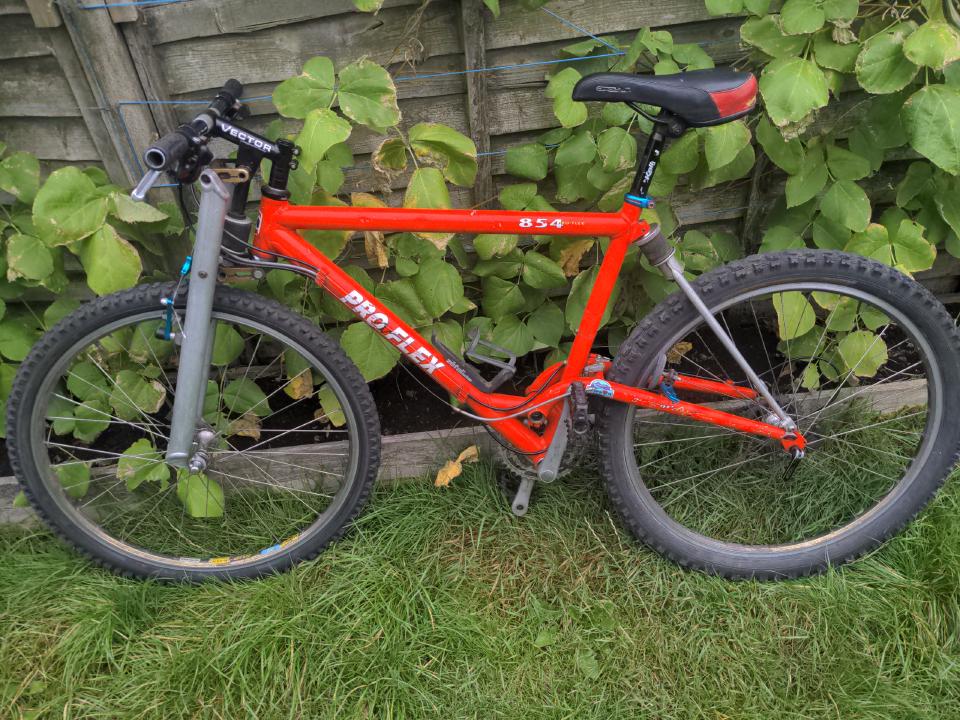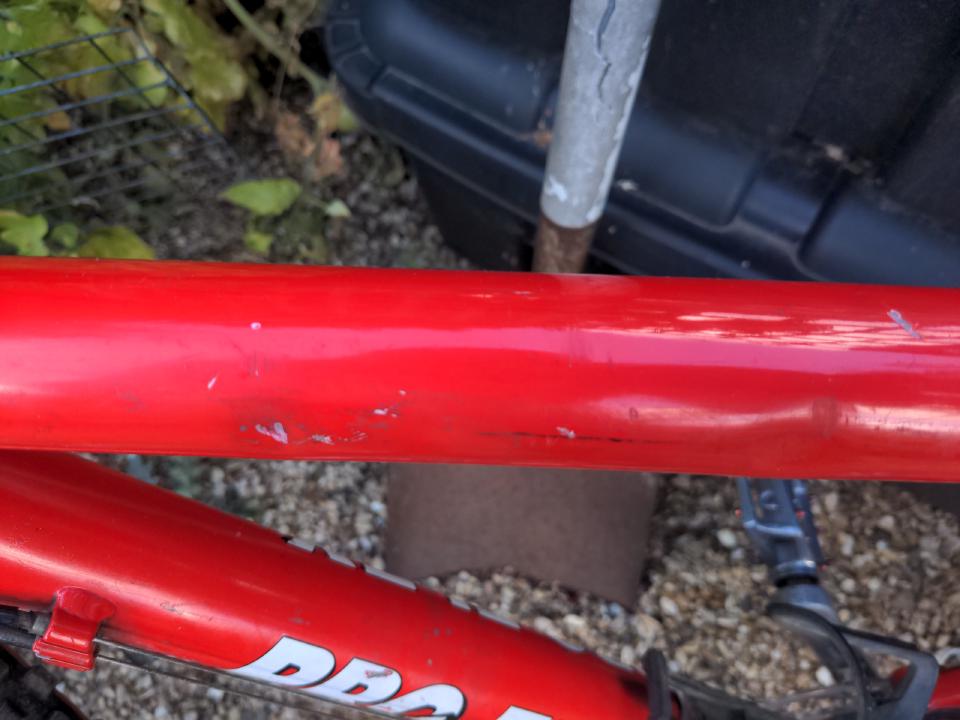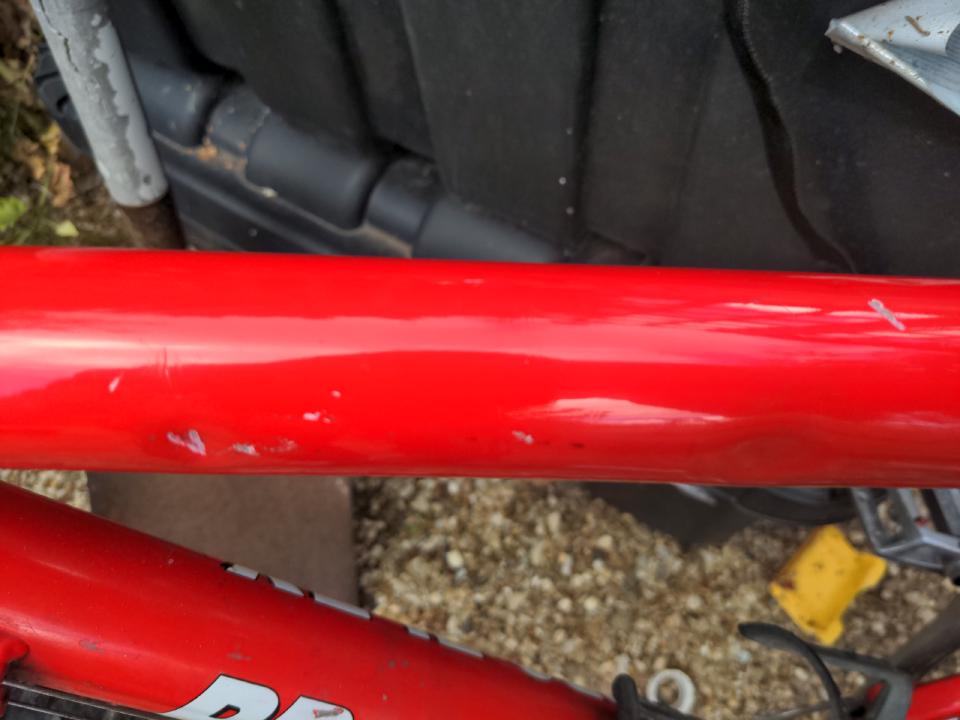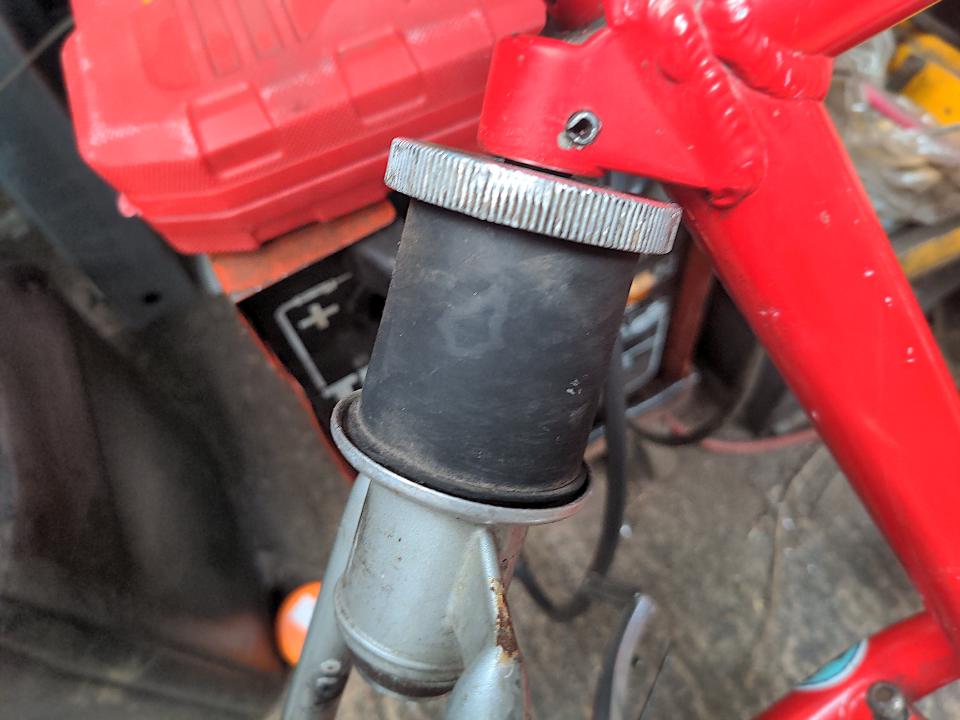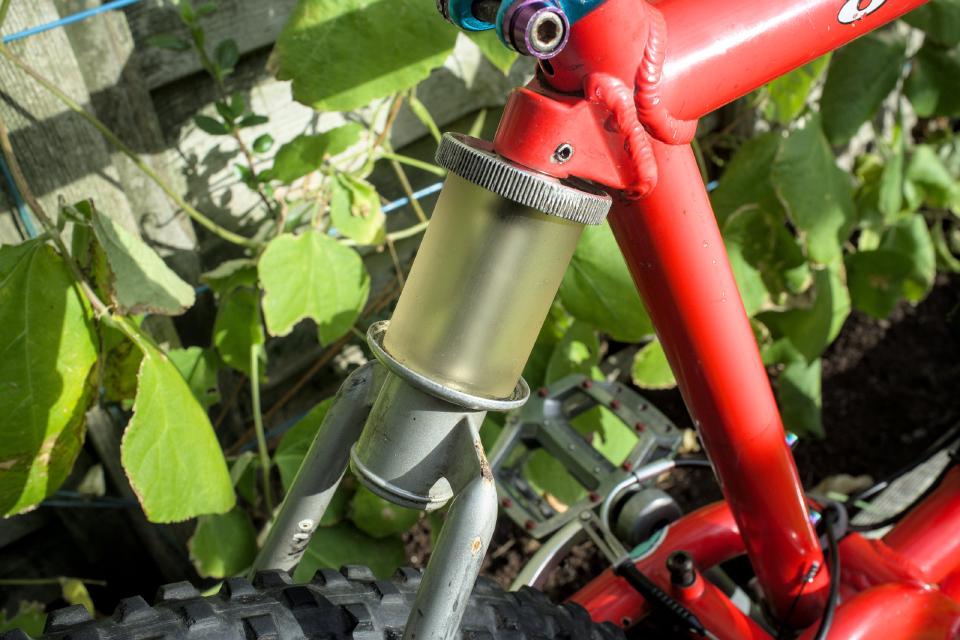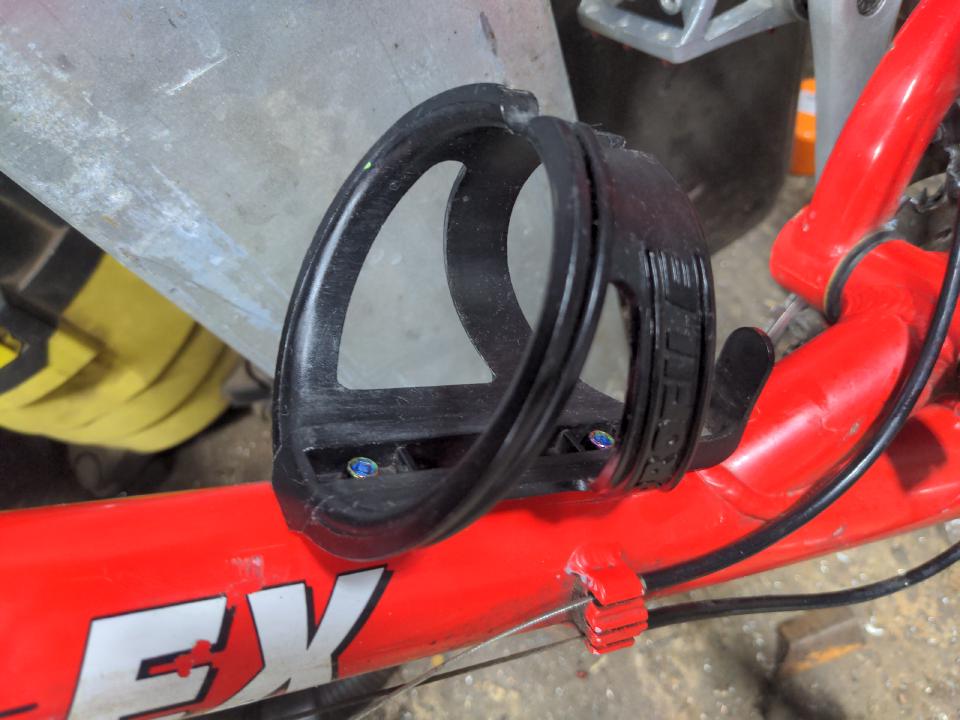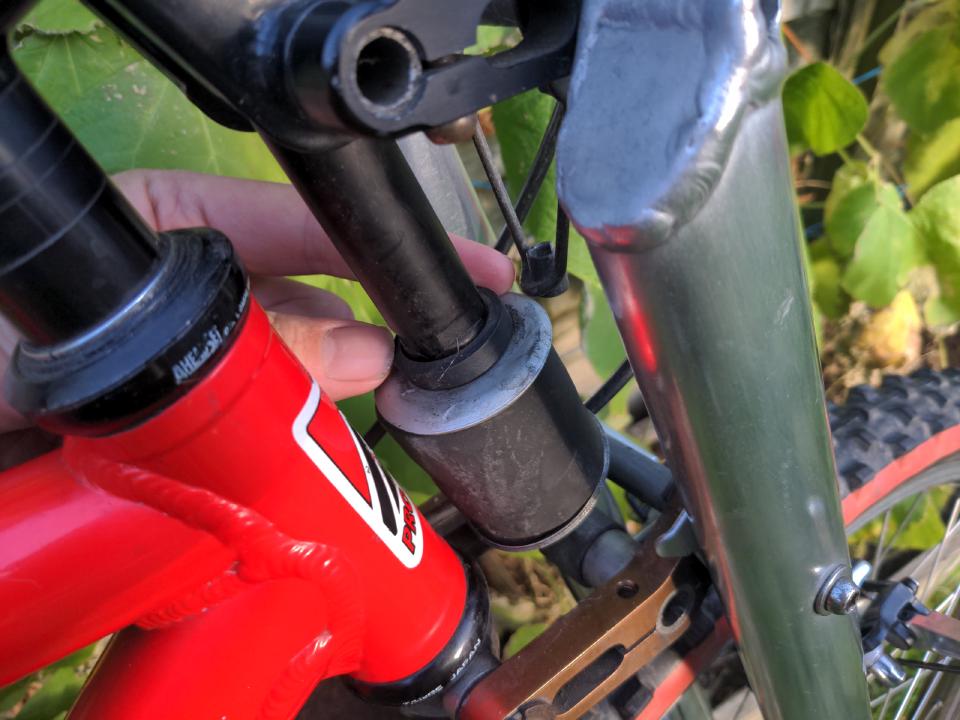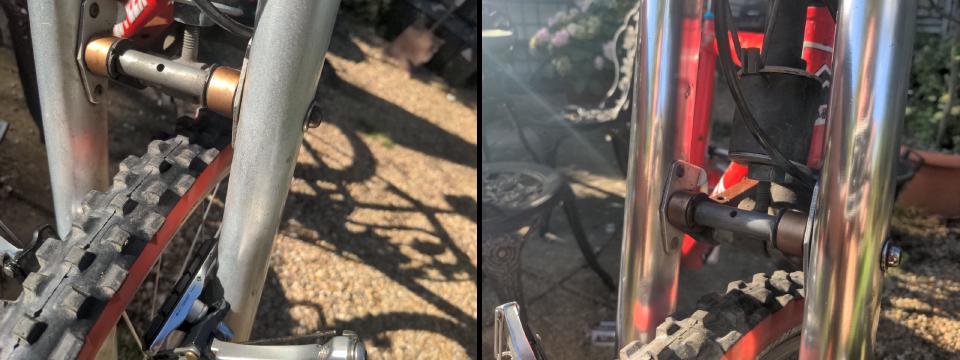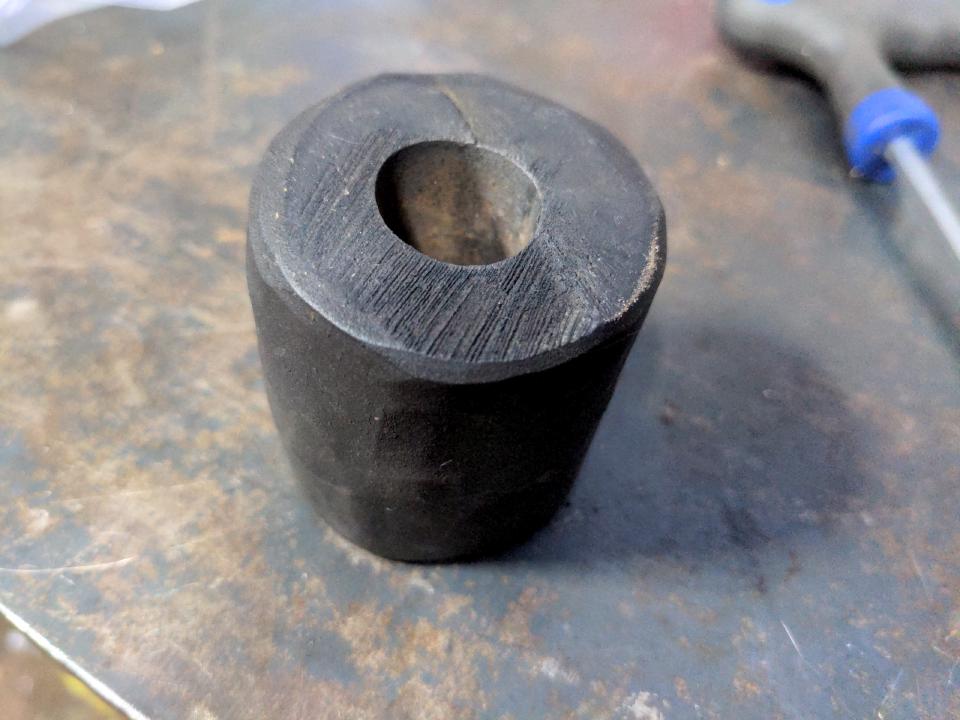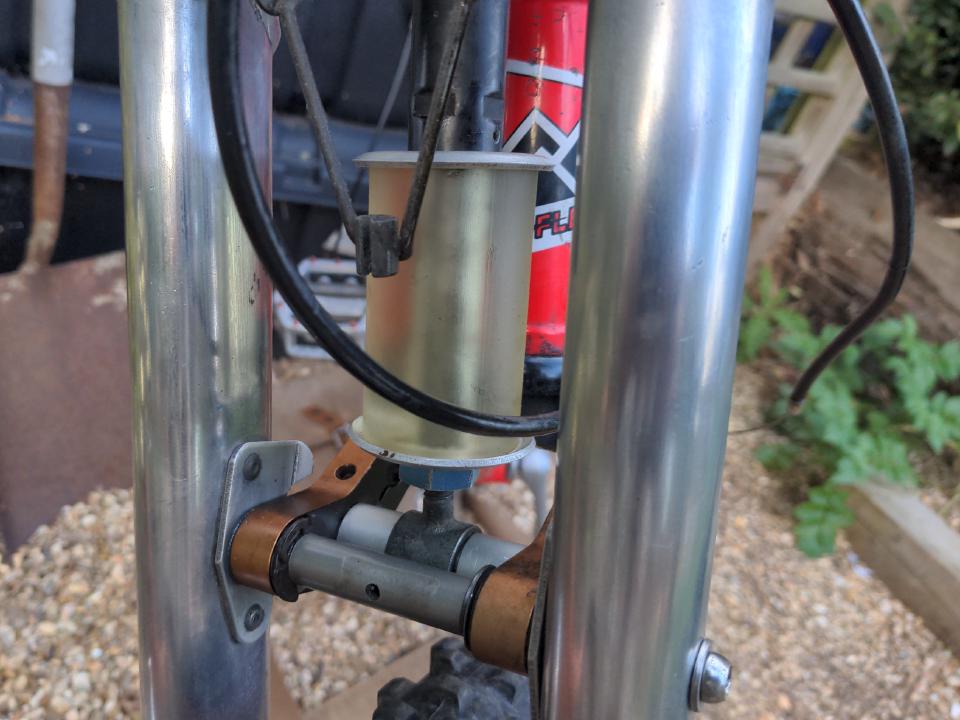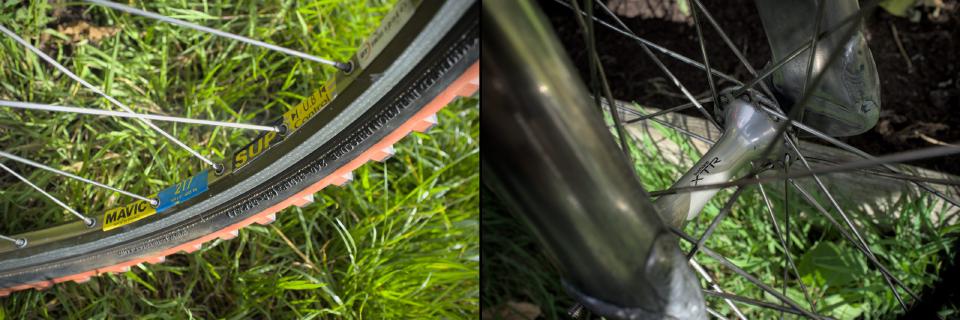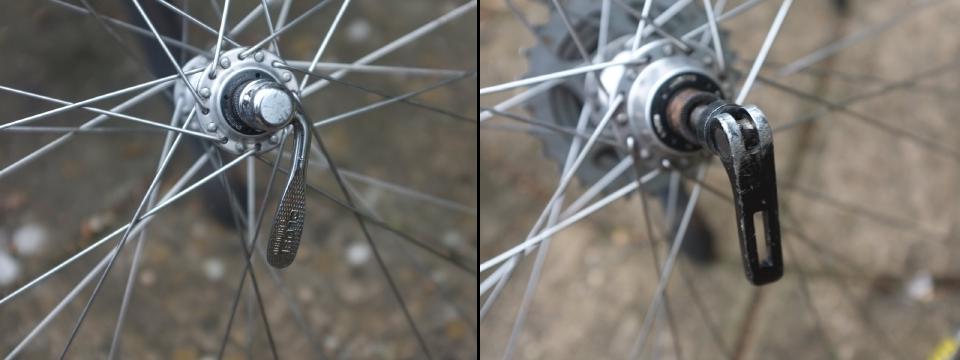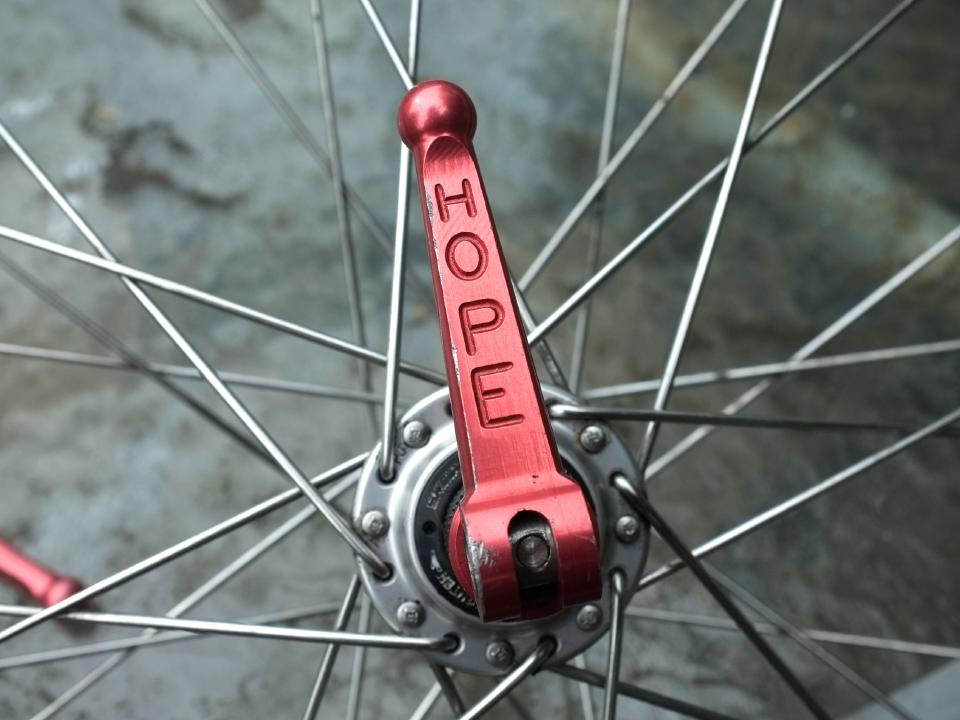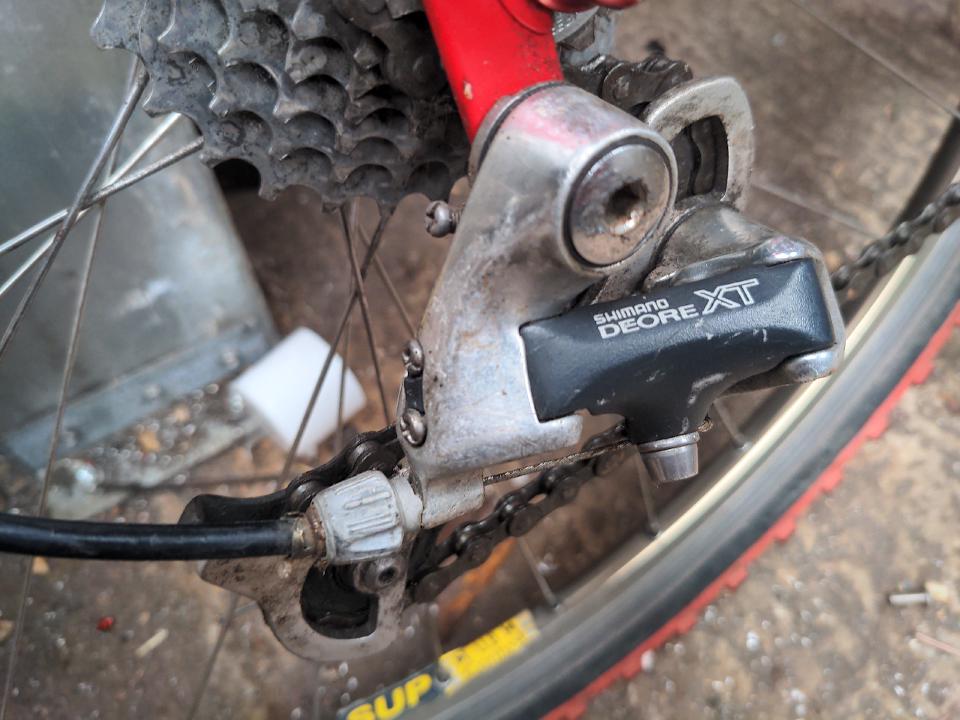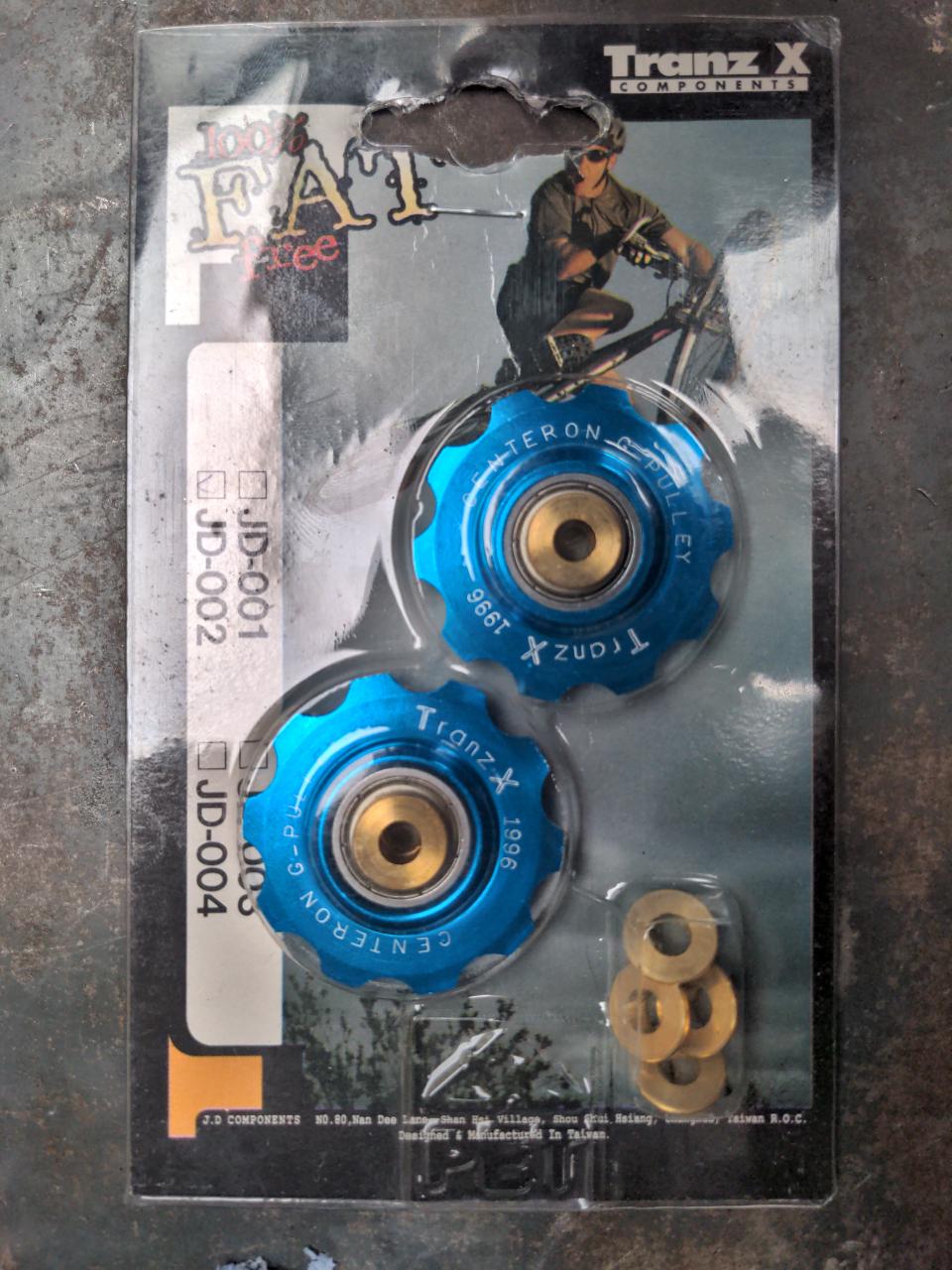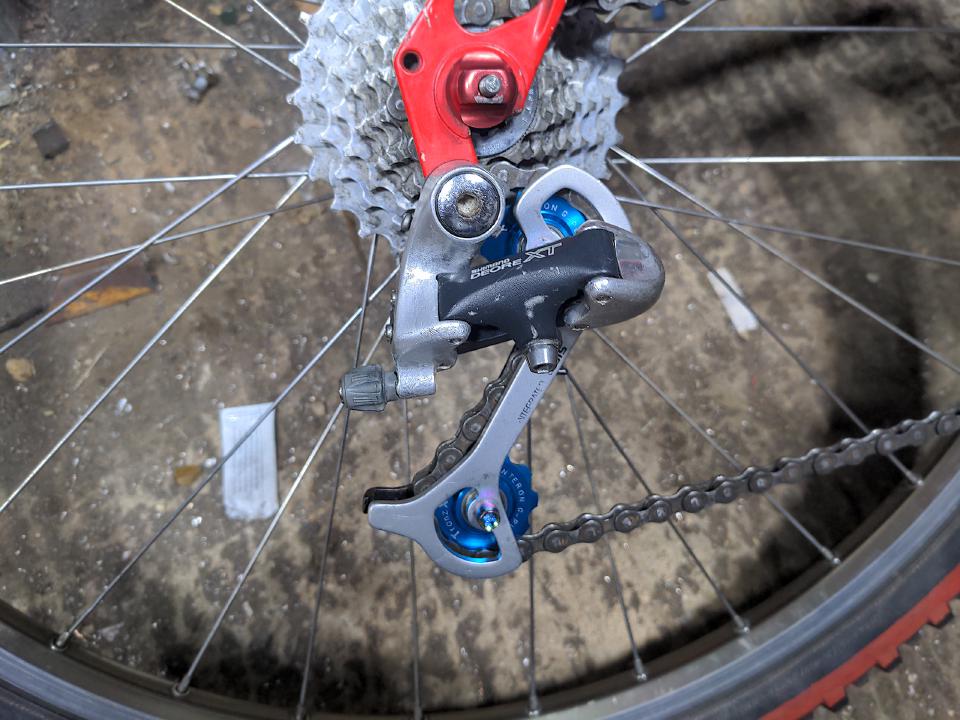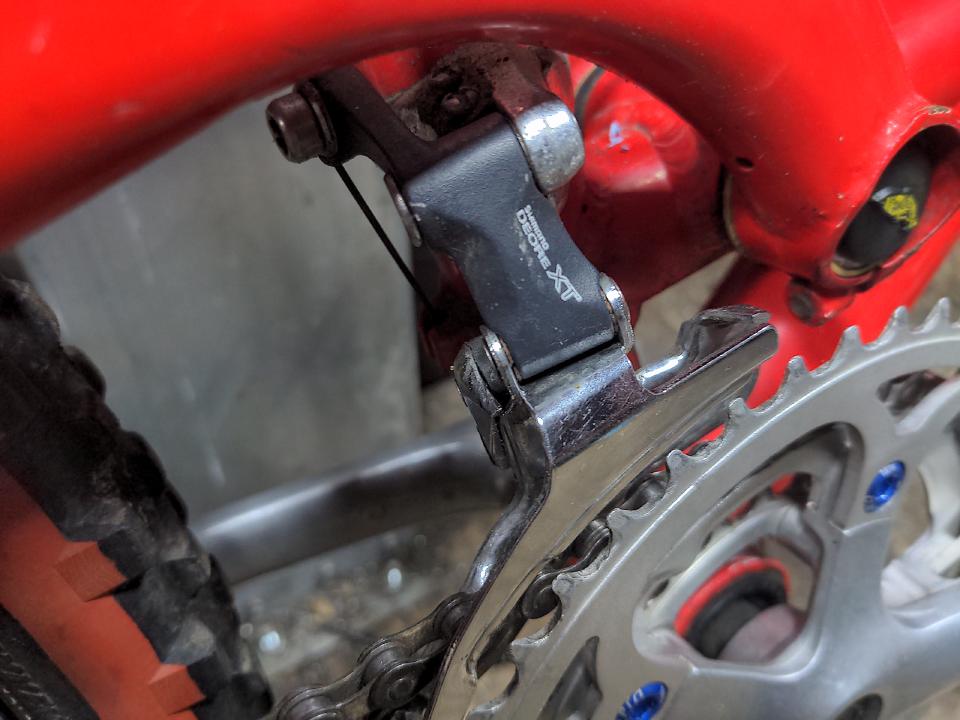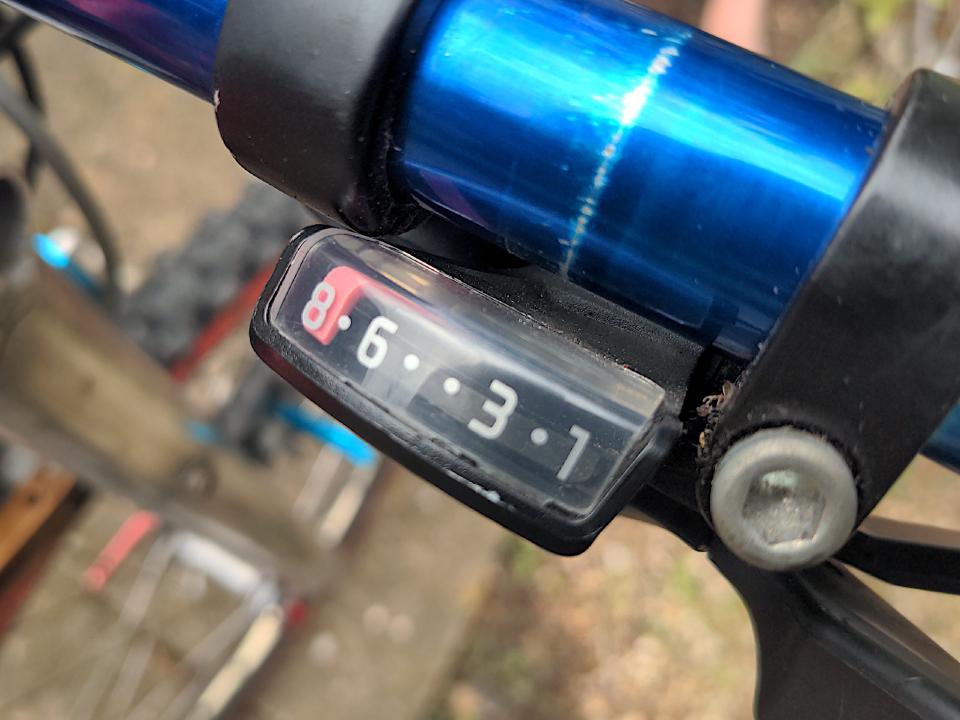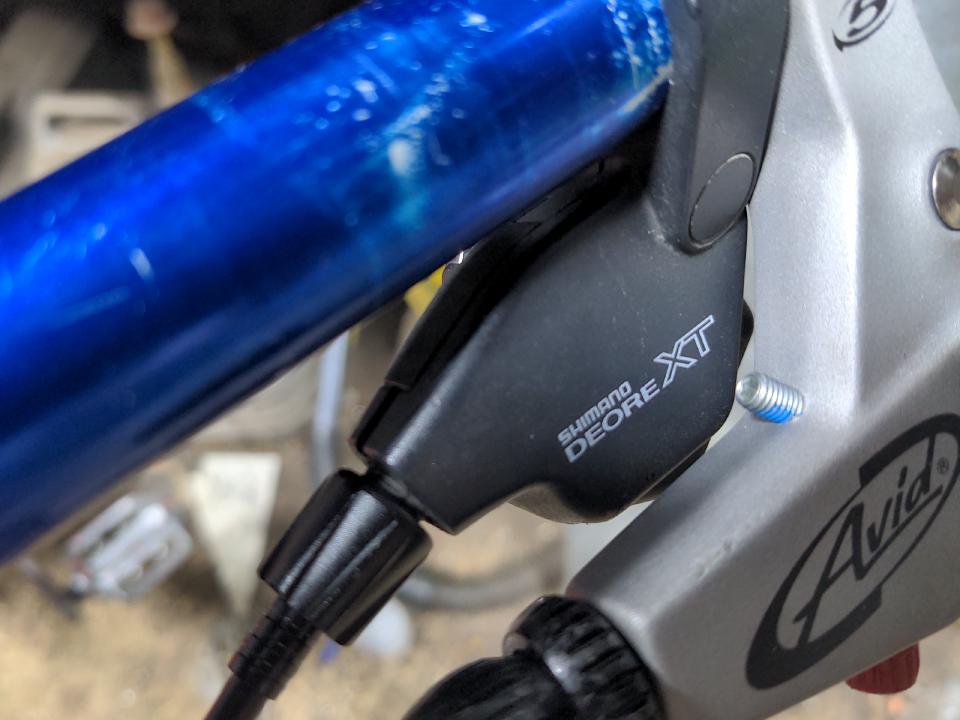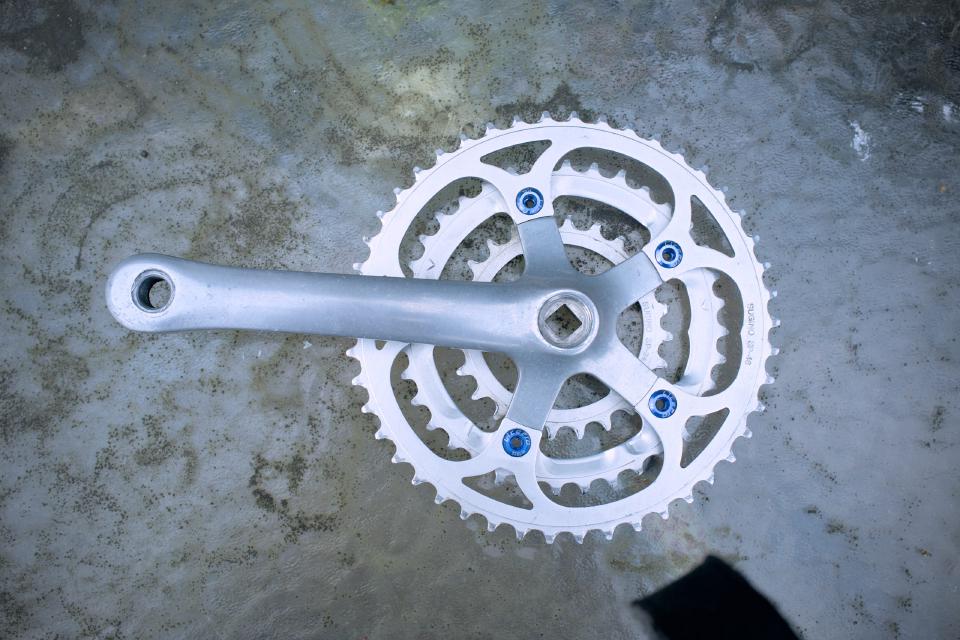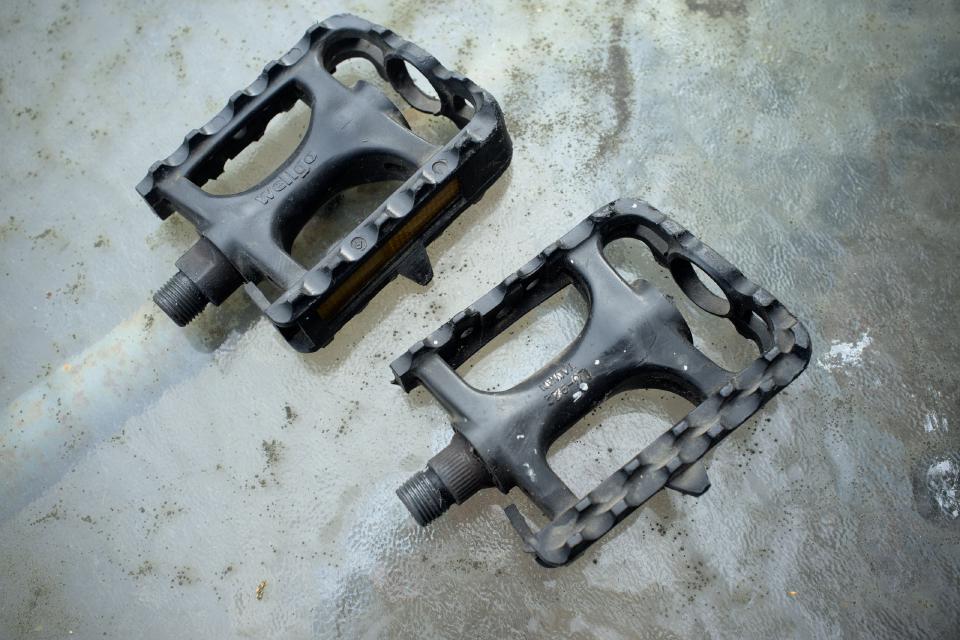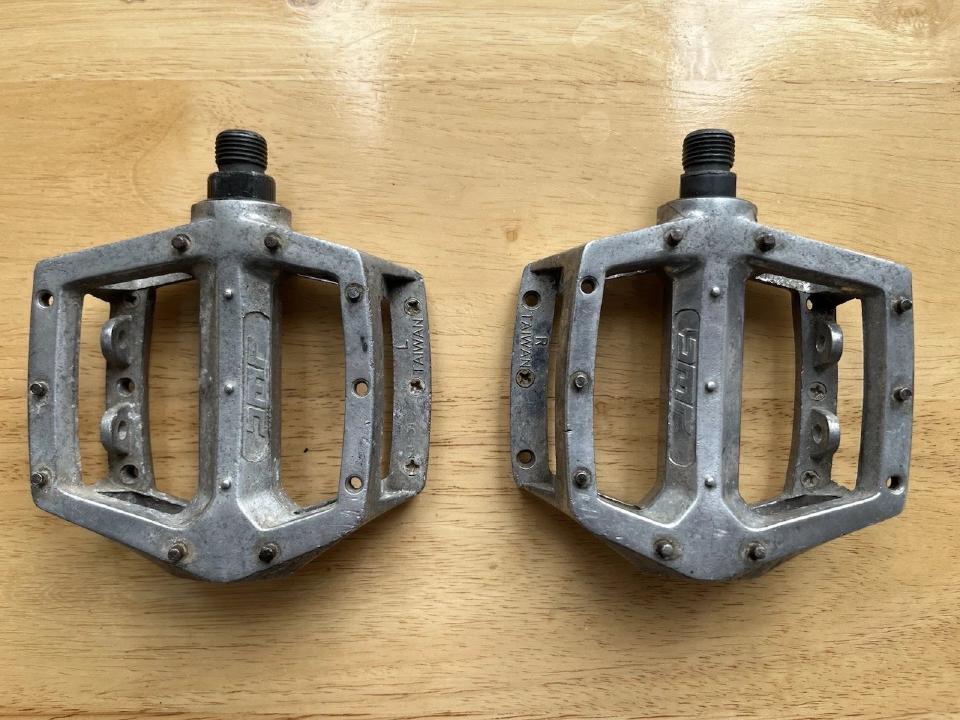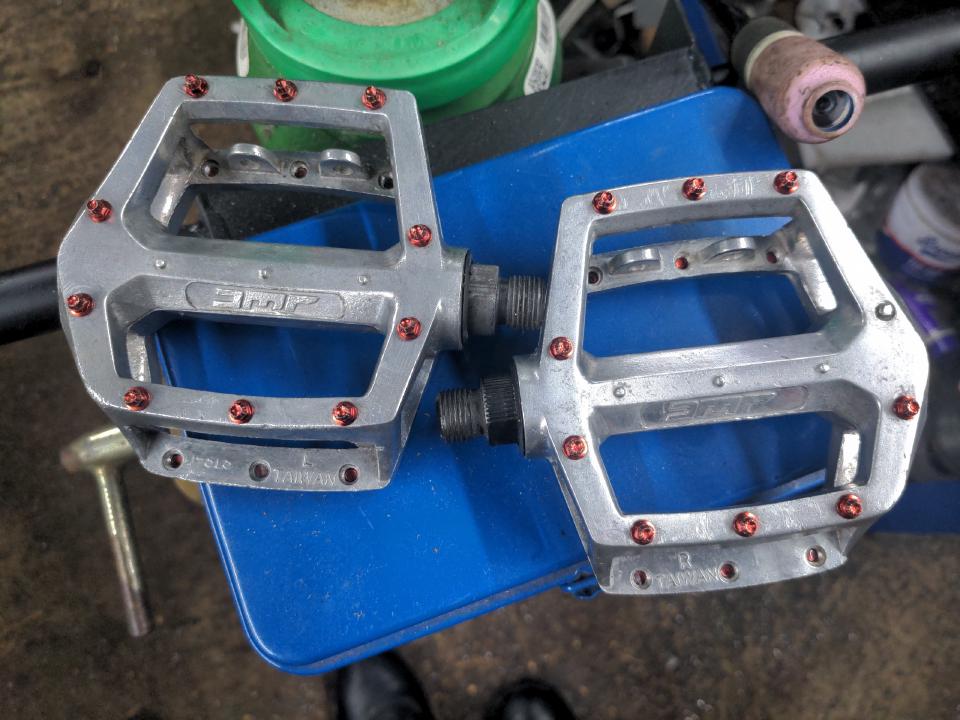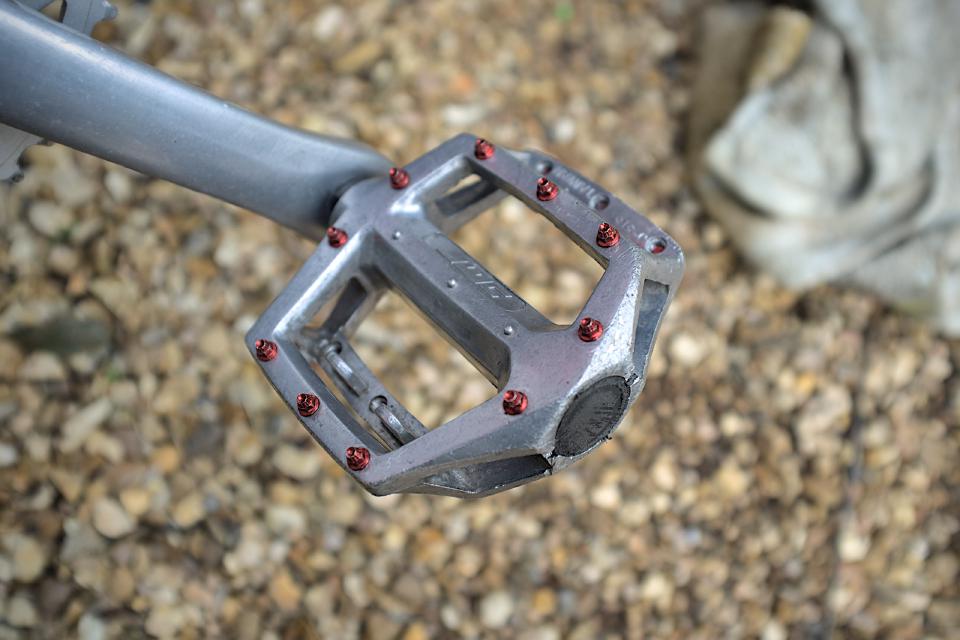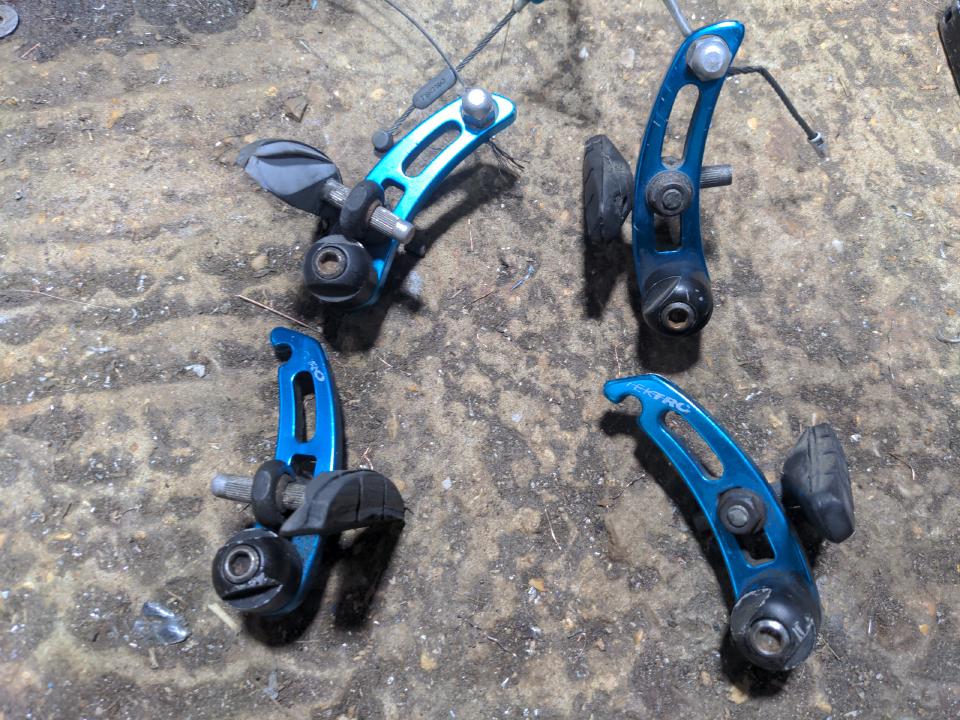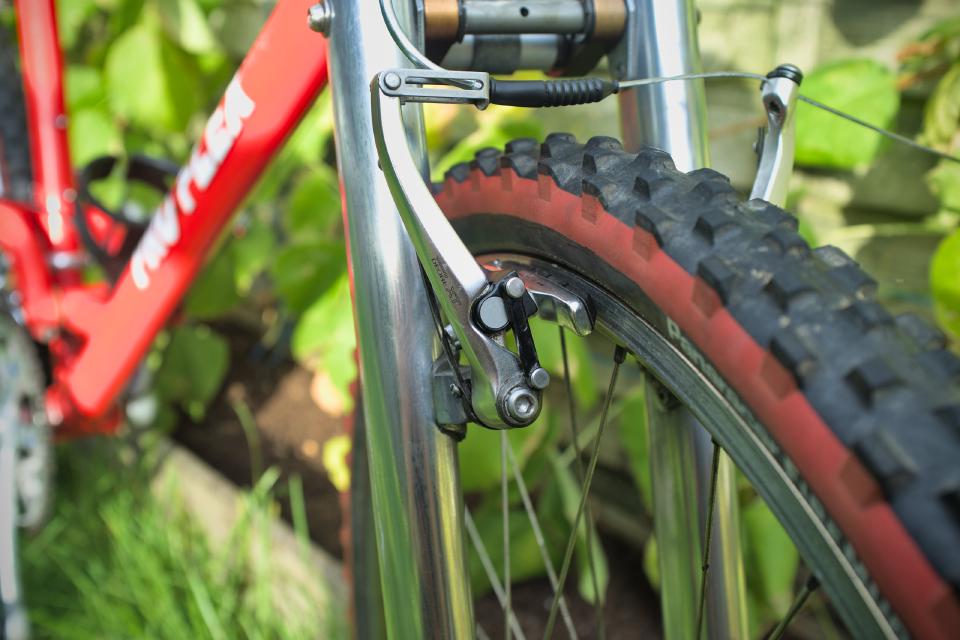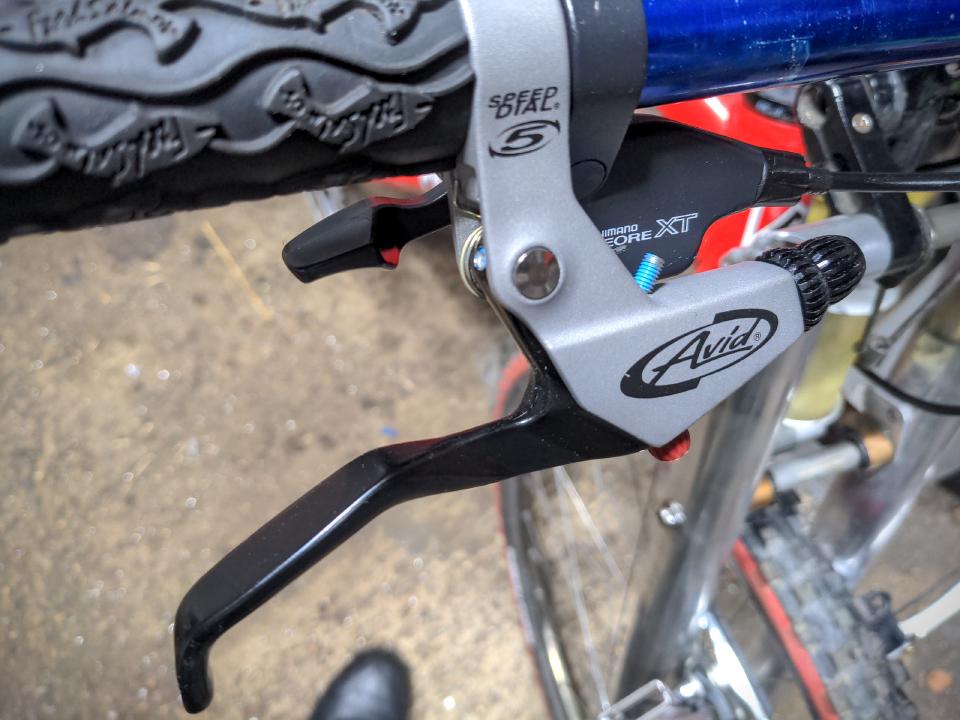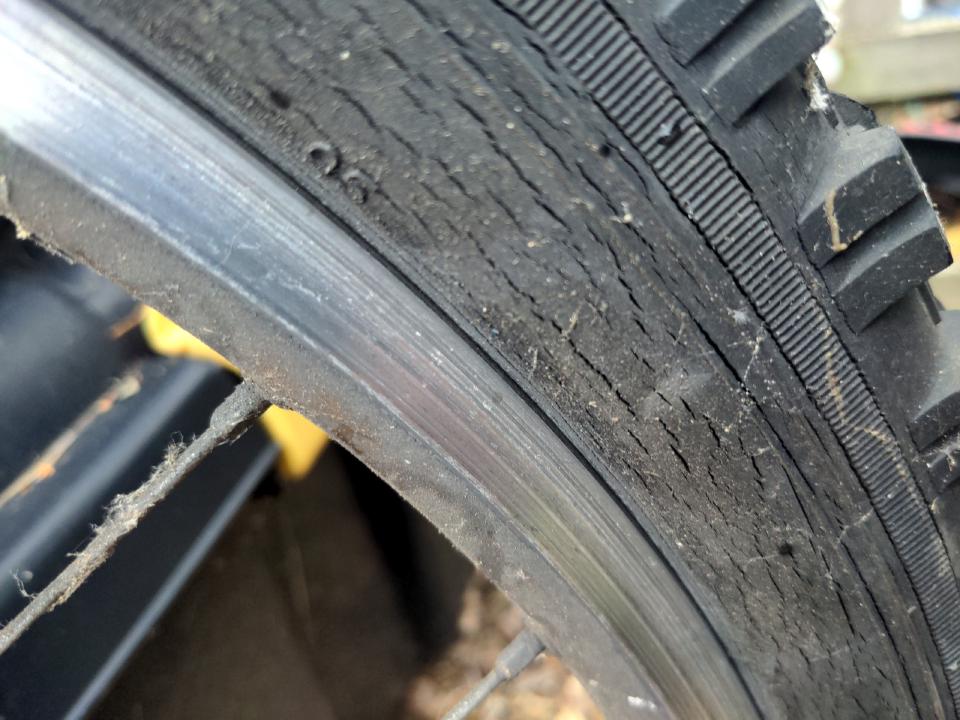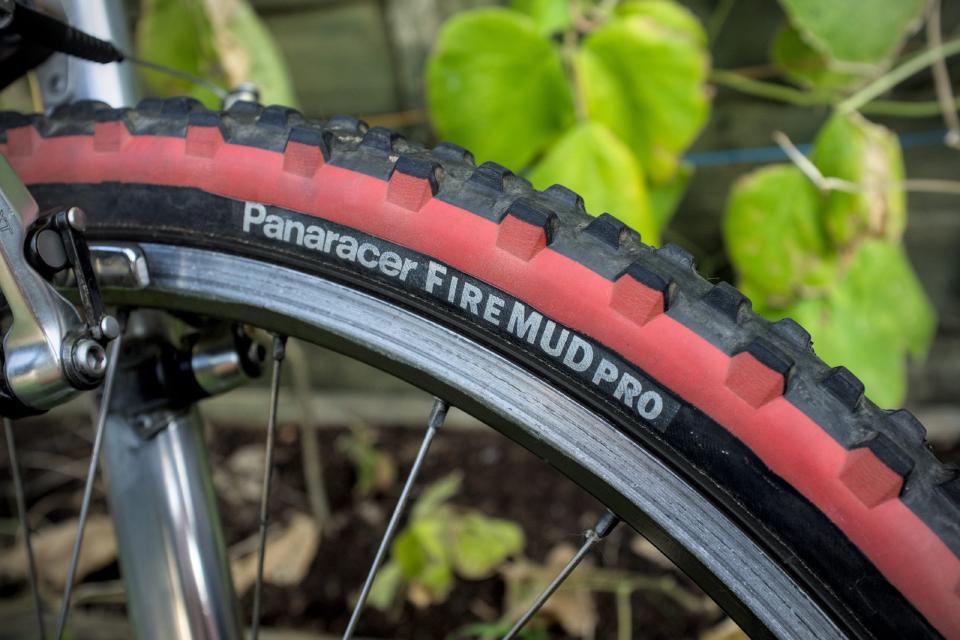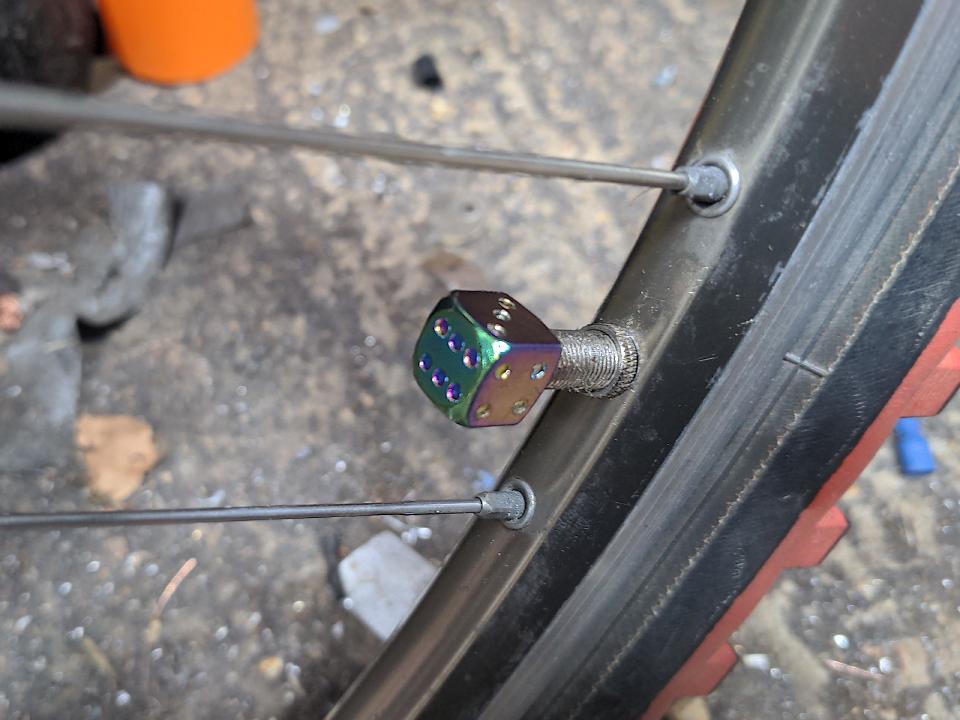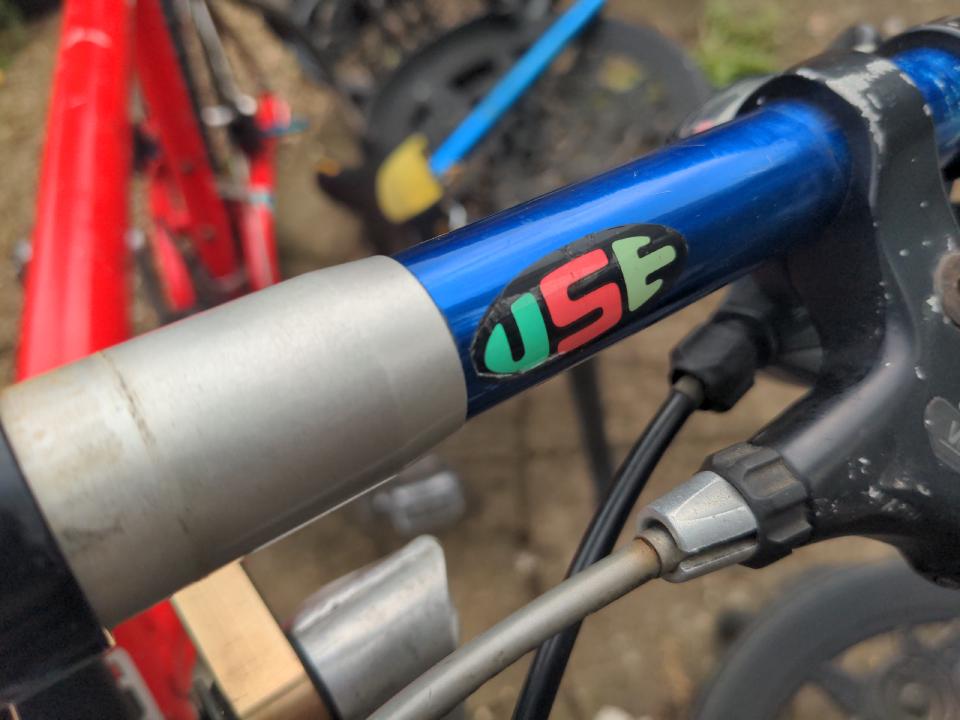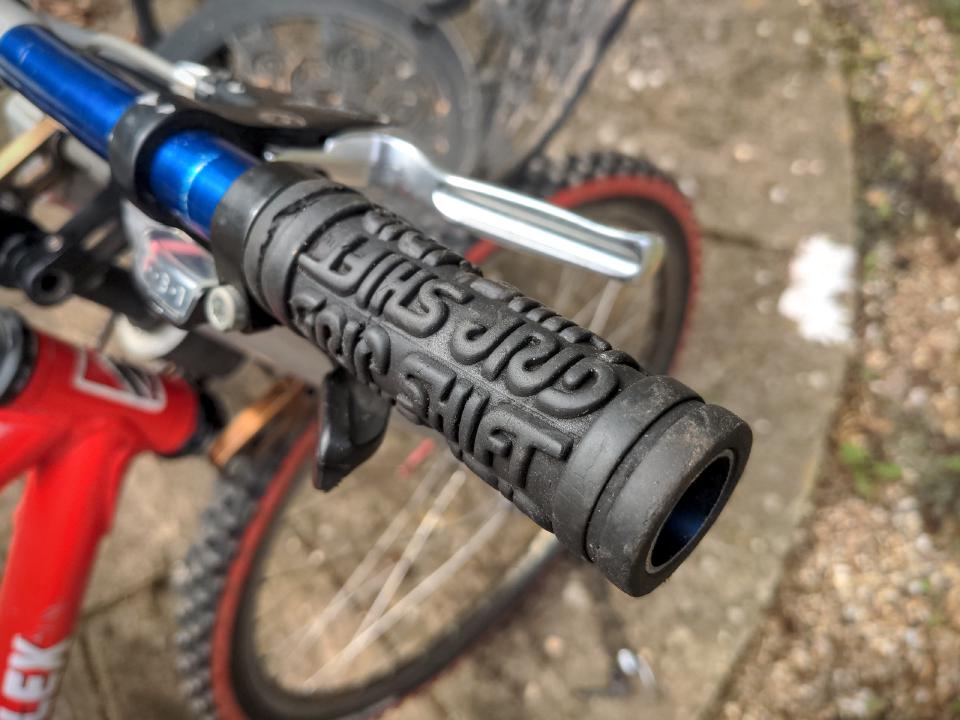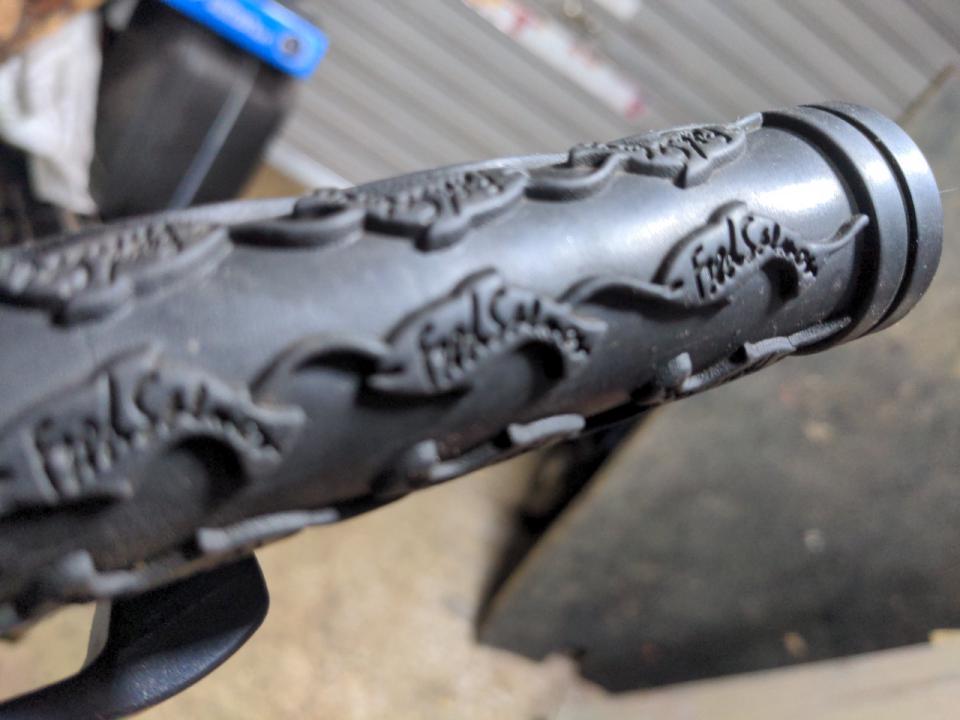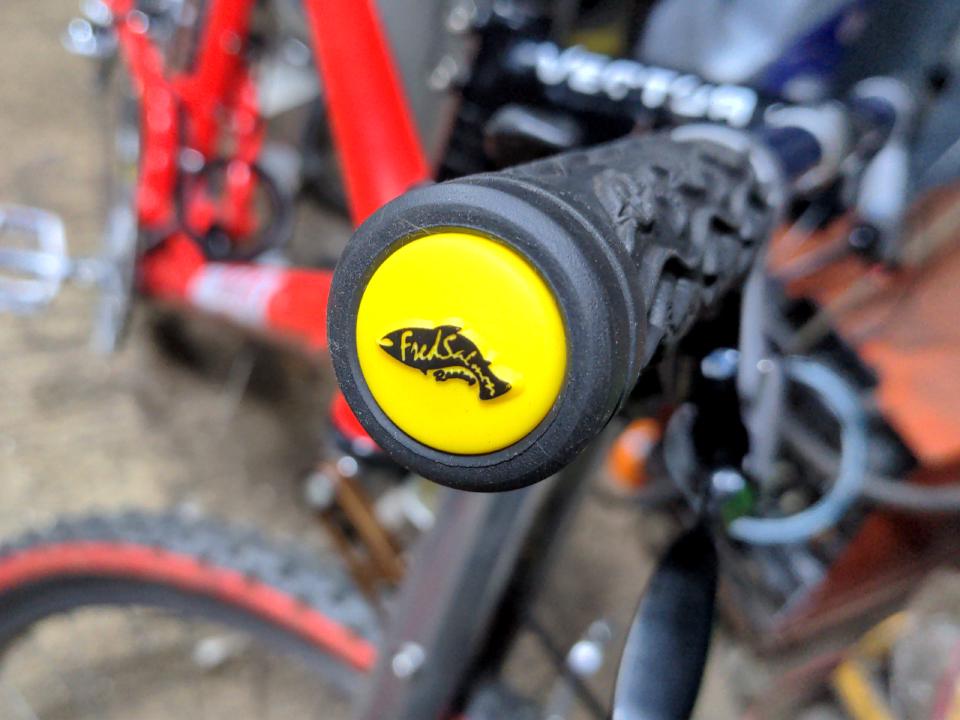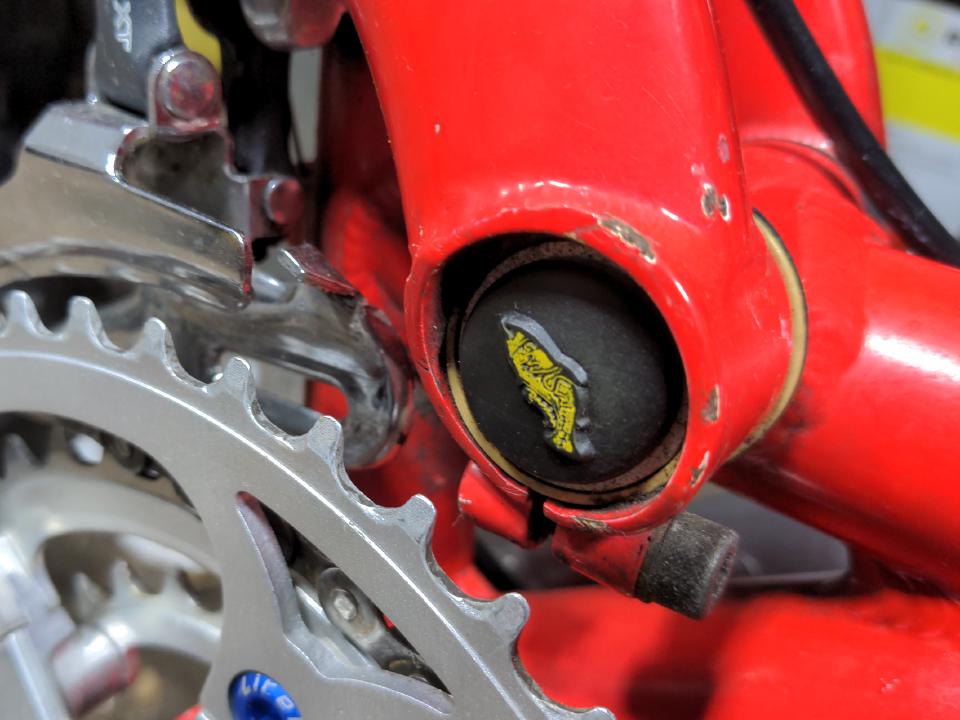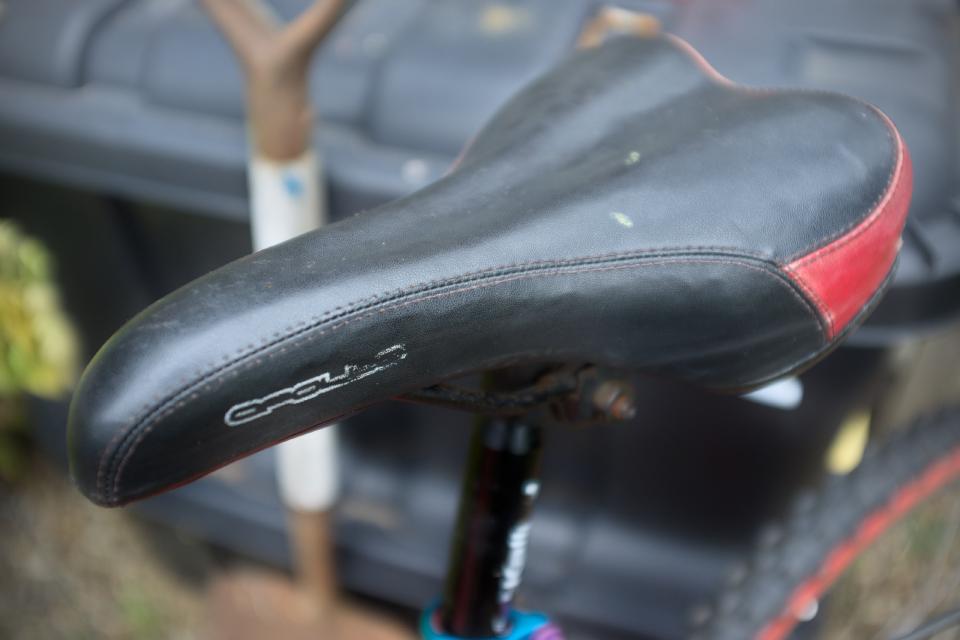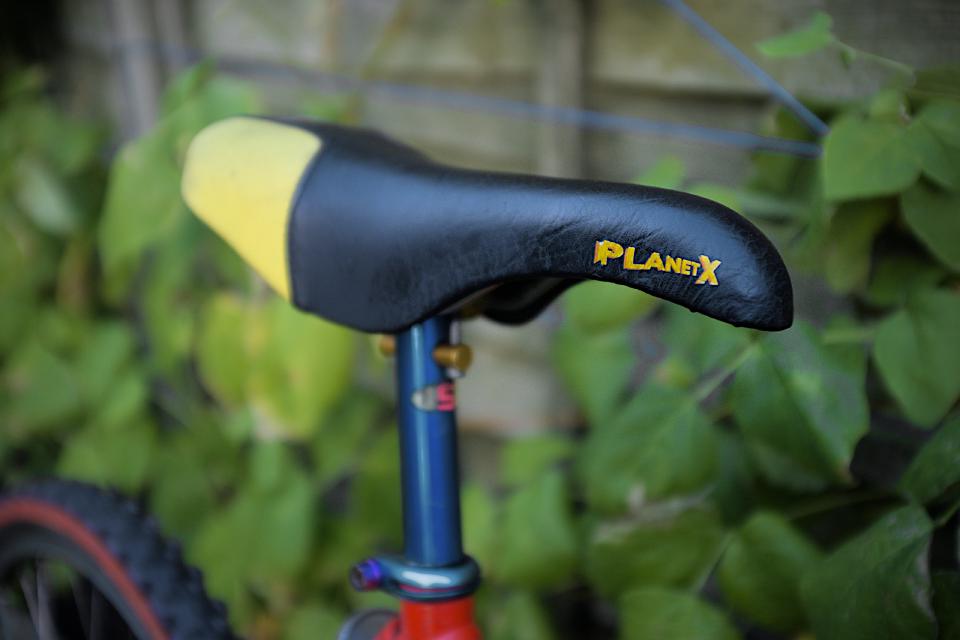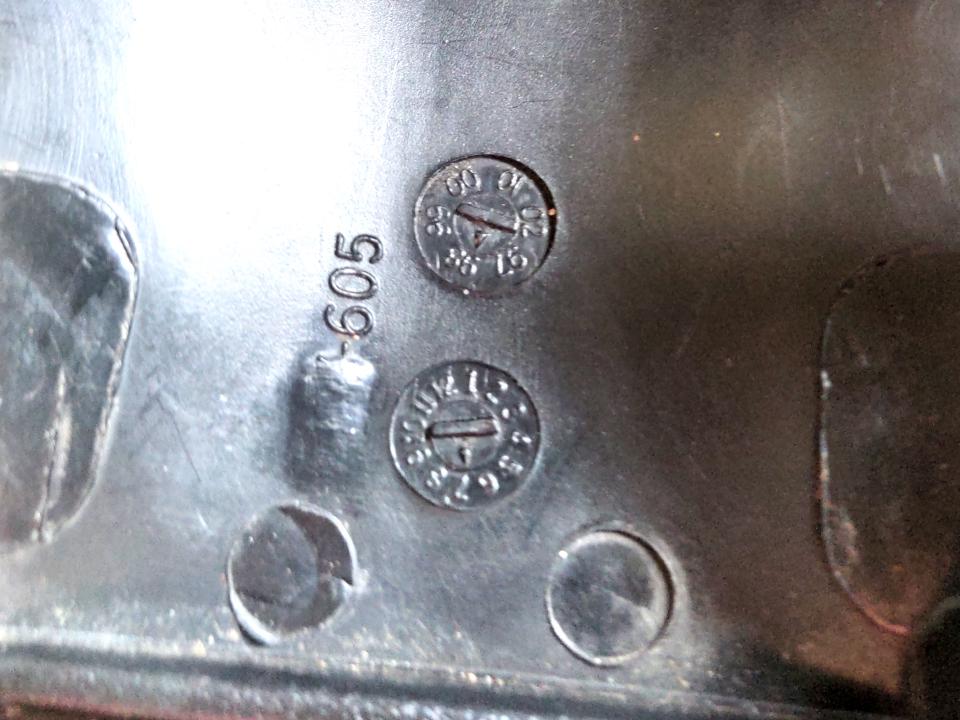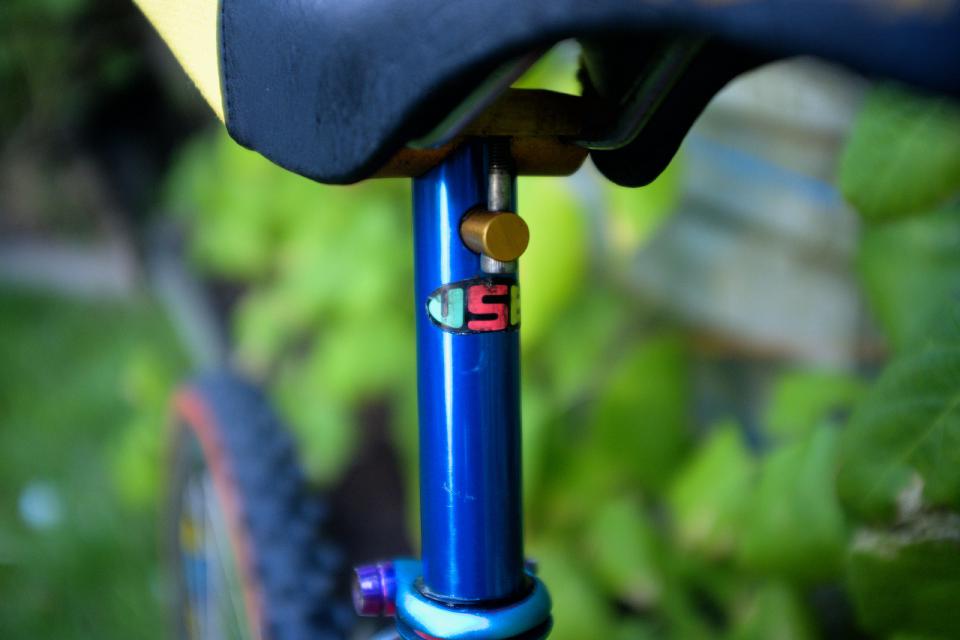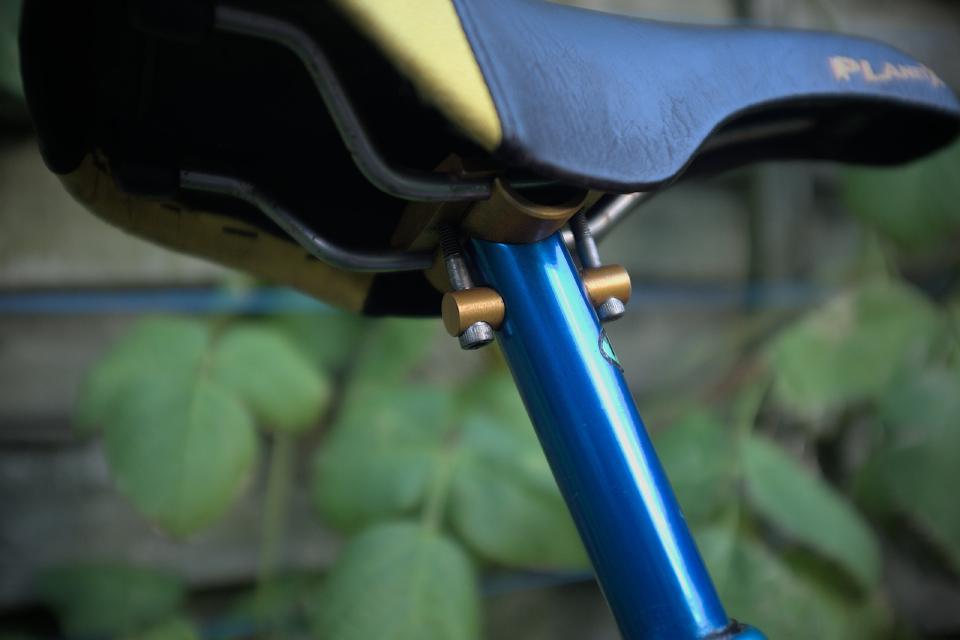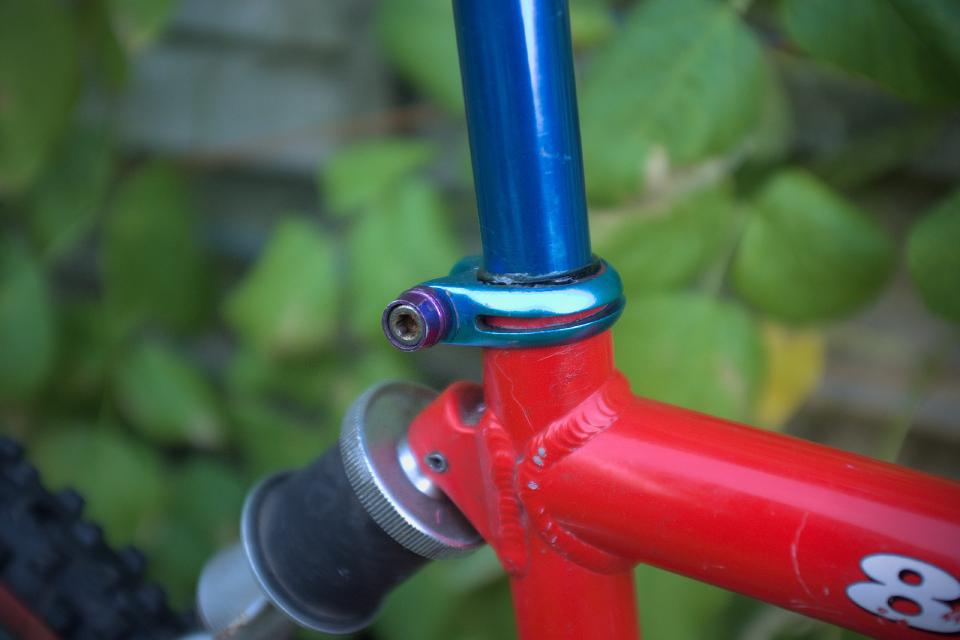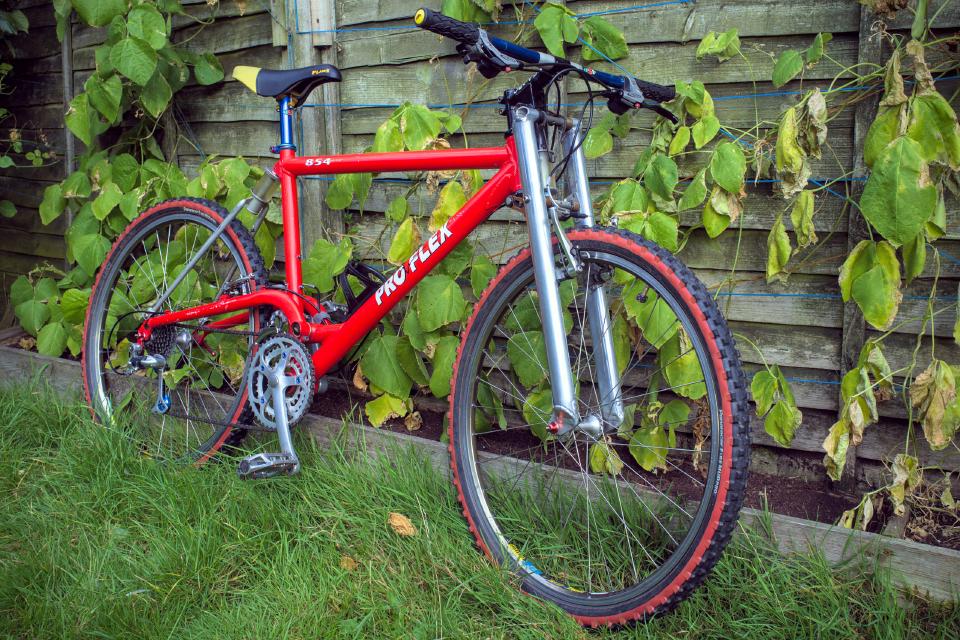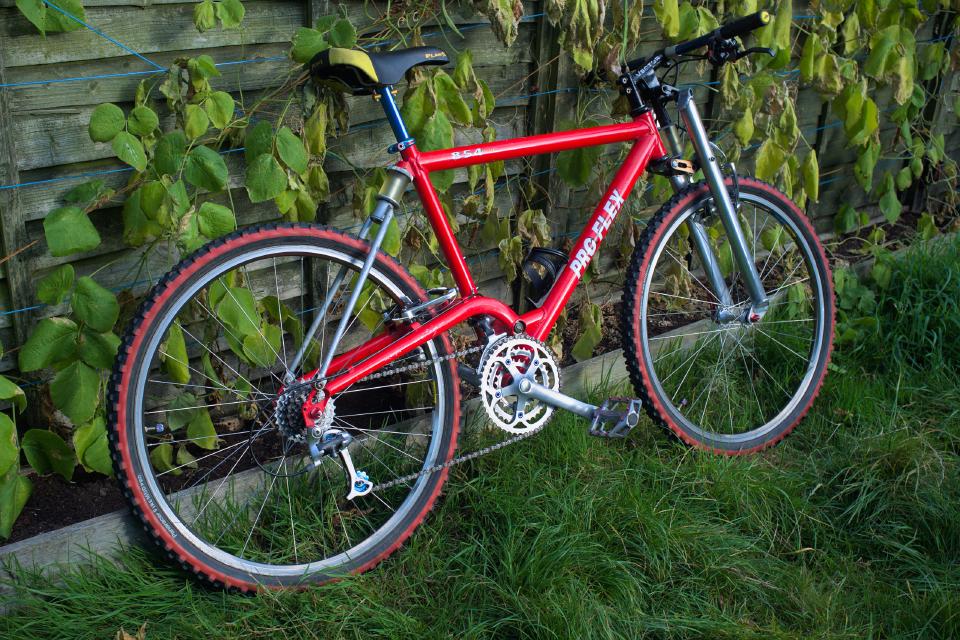I bought a Proflex 854 for some reason
I usually say yes to stuff.
I haven't always been this way. Some part of me still says "absolutely not" immediately to anything new. These days I understand that these words mean there is a fear which is wearing some imagined matter of principle as a skinsuit, and that I should find that fear. And when I say "yes", I like to say "yes, let's set a date to do that thing right now", because if I push it into an indeterminate point in the future it's basically the same as saying "absolutely not" by stealth.
Therefore, mountain bikes.
One day, my brother suggested that we should go out on mountain bikes to our teenage haunt of Epping Forest, and see where muscle memory would take us. In my teenage years in the 1990s, I lived on Epping Forest's doorstep, and mountain bikes were my Thing. For some time they consumed all of my paper round money, and riding them took all of my attention. And then something happened that would probably now be diagnosed as deep depression. It wasn't back then; I didn't hear the words "mental" and "health" adjacent to each other until the 2000s.
(If you're already bored, by the way, you can skip ahead to the end-of-build spec sheet.)
I didn't fully come out of this for over two decades. That's not solicitation for pity; I can see where the largest parts of it were self-inflicted and I own it (every bad thing said or done to me all put together do not compare with ten minutes of what I can do to myself). But I dropped out of cycling for fun and I used bikes after that as transport, until I stopped doing that too. I think I last rode a bicycle in 2014.
And with so much time out of the game I would have had a really good rationalisation for saying "absolutely not" when my brother asked; I saw the fear, and converted it into "fuck it, might be fun". I borrowed some Marin full-suspension something-or-other built by my brother with mostly early 2000s parts.
It was a great bike for me in that moment; it wasn't too heavy, it was quite agile, and I'd have probably had a few accidents if not for the forgiving, idiot-compensatory qualities of a full suspension bike. And it was fun! Saying yes to things is awesome! Muscle memory took us to many places where we used to do jumps and stuff, and I learned that dear God younger me had no fear bordering on a death wish and I am absolutely not doing that shit in my 40s.
Muscle memory also got us slightly lost a few times, but in Epping Forest you can just head in some direction and you will eventually find something you recognise.
And the whole way, almost from the second we set off to the moment we packed the bikes back into the inexplicably-reliable Range Rover, even through the soreness that comes with biking after a long time not biking, I was thinking that I need to get back into riding mountain bikes, because it was stupid amounts of fun. Also, mountain bike projects are a lot cheaper than car projects, right. Right??
At this point I was lacking a working bike, and that was something I wanted to fix. That's why I should have bought a nice new mountain bike (maybe even one of those newfangled things with electric motors), and because it's me that's how I ended up with a Proflex 854 from 1994.
You can forgive the bad photograph. I took it after a trip to Enfield and the journey home took three and a half hours because of road closures. I was tired!
The Enfield trip was to pick up the bike from probably the nicest guy I have ever bought things from. He has always lived in Enfield, which is on the doorstep of Epping Forest, just like I was on its doorstep back in the day, and was deep into mountain bikes in the 1990s, as I was. His bike shop was Heales, and so was mine! We rode with some of the same people! I would have made it home an hour earlier if we didn't end up chatting about Things Back Then.
Anyway, I said I got a Proflex "because it's me". Encoded into those words is "because I love a project". Like, I've spent decent-used-Porsche money re-engineering a Rover P5 and I'm nowhere near finished, but whenever that is done I can say that it's totally mine. I want a bike that is totally mine too.
Also encoded into "because it's me" is "because I'm a product of the 1990s". I could never afford a Proflex back then, because I was paying for my own stuff with paper rounds. As I recall these were thousands in mid-90s money. I never saw one in the wild, but did daydream about them while reading mountain bike magazines in 1995. These were dream bikes!
In the early-to-mid 1990s, nobody really knew what suspension designs worked, and every manufacturer had a new design pretty much every year. That settled down in the late 1990s. This was in the weird experimentation era, so of course it is not as technically-good as something even five years newer. That's not the point. The point is nostalgia! I decided to put together a bike that was something like I would have put together in the mid-to-late 1990s if teenage-me was given someone else's credit card.
Let's have a look at it in the light.
As said, this bike was really expensive when it was new. Every expensive thing goes through the trough of no value. When bikes do that, they are often thrown away. Often, they get used as cheap transport, which is a much better fate; bikes rarely break irreparably, so it's a shame that they ever get thrown away.
And when this particular bike was used as cheap transport, parts wore out or got stolen. When that happened, they got replaced by inferior modern parts. I don't like some of the choices, but that kept the bike alive long enough for me to get my hands on it. Other things on the bike were awesome survivors from their era, and just needed some love.
Let's go through everything!
Frame
Obviously the frame is original. It had plenty of battle scars, including a non-trivial dent in the top tube. But what made it look bad, as opposed to just well-used and even well-loved, were a load of black scratches all over it and a slight fade of the top layer of the paint.
My intent was initially to get this resprayed after all the mechanical work was done. But on a whim I tried attacking it with some Meguiars compound polish (the same stuff I used to polish the headlights on the Fiesta). Even one quick round of polishing was transformative.
So I continued with further rounds of compound polish until it looked great. I might yet do that respray. But now that it merely looks like it's had some action, rather than shitty, I might stop here.
Surprisingly, the rear elastomer worked.
But it was probably a thousand years old, and it would not hurt to replace it. Suspension Fork Parts, saviour of Proflexes, sell brand new elastomers for the 854 and many other obscure bikes and bike forks too. This is amazing! I love this company! I'd never have taken on this project if I could not obtain the elastomers; making them myself isn't impossible but not something I want to do.
The new one works much better. I had to make a couple of the rubber bushes that didn't come with the elastomer, because they were causing the suspension to creak. I started with some 30x5mm generic rubber spacers and modified them with a countersink to get the bore shape right.
The cage had some generic black plastic Zefal bottle cage bolted to it with rusty M5 bolts.
It says "Carbon" on it. I worked with carbon fibre recently; this is not.
I found a Profile Design cage from the 1990s to replace it, and rainbow-anodised stainless steel M5 bolts to hold it on.
It's apparently from 1993 or 1994. The black plastic was not this black or shiny when I got it. I cleaned it up then treated it with some GTechniq C4.
Forks
This had the original Girvin Vector fork fitted. That's a bit of a rarity; they were a weird design and most people replaced them with telescopic Rock Shox when the elastomers gave up (which they did very quickly; they were basically a very expensive consumable part). That would be the sensible decision, which I was not going to make.
The elastomer on this fork didn't work at all. It needed replacing, and the fork needed a strip-down and service while I was there.
But before doing any of that, I gave them a polish to find the motivation to rebuild these rather than replace them with something more conventional.
Alright! I ordered replacement elastomers from Suspension Fork Parts. I'll say it again: I love that this company exists.
I thought it strange that the new elastomers were significantly larger than the old ones (70mm vs 45mm).
I even emailed Suspension Fork Parts about this, thinking I might have been sent the wrong elastomer, but because I'm impatient I didn't wait for a reply and took the fork apart anyway to figure out what was going on. I didn't need to inspect the old "elastomer" very closely to discover that this wasn't actually a Girvin Vector elastomer at all.
It was very clearly some random chunk of hard rubber that had been hacked into roughly the right shape and not quite the right size to replace one in the past. I don't mind that; again, someone had to use this as transport in the past and might not have been able to afford to replace this with the real thing, or couldn't merit spending $55 US and waiting two weeks or so for them.
It's a bit of a bodge, but to repeat a theme, this bodge meant it could continue to be used long enough for it to get into my hands. Anyway, I did paper rounds as a kid; my bike had to be at least marginally functional every morning, otherwise I would not have any money. I understand the need to bodge! Sewing up the sidewalls of Tioga Psychos (because adjustment slippage of cantilever brakes caused the pads to munch a hole in the tyres) was not the worst thing I have done.
(I could mind slightly more that they refitted it with the top and bottom washer reversed! They are very different, and are shaped that way for a reason. This caused one of them to get distorted, and I had to gently persuade it back into the right shape with a hammer.)
Anyway, new elastomer.
Yay! But all of that handling of the forks made the polished aluminium dull again, so I had to give them another polish. Oh well!
Wheels
This came with Mavic 217s on pre-chunky (pre-Parallax) XTR hubs. I don't know if I would have bought the bike if it didn't have these. I think I needed something other than the frame to give me the "oh my GOD" response, and this was it. I love them! They're exactly what I would have built if I was building the perfect wheel for this bike. They only needed a good clean to be as close to perfect as I care to get.
They had mismatched quick release skewers, and that was not perfect.
That wouldn't do, so I found a pair of well-used but mostly-presentable Hope titanium skewers from the early 1990s.
Sweet.
Derailleurs
The rear mech is Shimano XT from 1996.
That works perfectly, and only needed a strip down and clean. New jockey wheels wouldn't hurt, though, and because it's me (see above)...
...I was forced to find some blue anodised jockey wheels from the 1990s. Actually I merely set out to find some sealed bearing plastic ones, but I don't know when to stop. Also because I don't know when to stop, I reassembled it with rainbow anodised jockey wheel bolts.
The front mech was perfect as is, minus a couple of scratches which I don't care about. It's also period-appropriate Shimano XT, which was nice. This is a common thing to cheap out on because front mechs are usually mostly invisible and the cheap ones work just as well as the good ones.
I cleaned this in situ; I decided to not take it out of adjustment because I was never very good at adjusting front mechs.
Shifters
This came with some Shimano Altus M310 RapidFire shifters.
They might not be pretty, but they work well enough. In fact, they work better than the 1990s ones did because the mechanism inside isn't so fussy, so they'll go in the spares box. They're just not well-suited to the bike, because I think they post-date the frame by a decade or more.
I replaced them with Shimano XT SL-M739 shifters from about 1996.
Unlike later shifters, these do not have an indicator to tell you what gear you are in. I don't mind, because I can tell what gear I am in from the amount of pedalling effort required. I remember that the indicators on the later M740 shifters used to break all the time anyway. Even granting the premise that a gear indicator is useful, the M740s wouldn't help much; give it a few months and one will permanently read "8".
DRIVE-BY TIP: when fitting cables to these shifters, do NOT attempt to remove the screws securing the cover with a standard Phillips head screwdriver. You'll probably destroy the heads, which will result in a side quest that you do not want. Instead, use a #1 JIS screwdriver. I learned that from this YouTube video; go forth and spread the gospel of JIS!
Chainset
This came with a Sugino Super Shifter Pro chainset. It's cool and correct for the era.
I think it'll be difficult to get chainrings for it, but that's a problem for Future Lewis.
It needed a good clean. It also needed some blue anodised bolts, because it is the 1990s.
I tried to be really careful when pressure-washing it, but I wasn't careful enough and I blasted away the original sticker. That made me a bit sad, but on the upside I am the first person to put a chainset sticker into low-Earth orbit.
Pedals
This came with some plastic Wellgo pedals. I'll assume they are in the "replaced better parts that got stolen" category, because this bike came from London.
Plastic pedals like this work fine, but they had to go. I could have invented some reason to change them, like loss of pedalling efficiency because of the flex in the plastic. it would be a great rationalisation! But I just don't like the look of them.
The starting point for their replacement was a scruffy pair of DMR pedals which I got from eBay. Here's a photo taken by the seller.
I don't know what year they're from, but I think they're from the 1990s. The year doesn't matter, because the design is a classic BMX-style flat pedal, and all these pedals look the same really. Of all the pedals that don't attach you to the bicycle these are my favourite design (and as someone that was a competent rider, I know I'm not ready for SPDs at this moment in time, because I'll end up injured).
They cleaned up well. I found a combination of Amberclens and Brillo pads very effective. But they didn't run very smooth, so I stripped them down to their component parts to clean everything out and replace the bearings. Also, several of the studs were missing, which gave me the opportunity to add some anodised bling, because it's the 1990s.
Now we're talking!
Rebuilding the pedals took about seven hours, because it required removing all 40 of the studs (TIP: the easiest way to do this is to clamp the studs in a vice and rotate the pedal; you're welcome), then re-tapping all the holes from no-thread-in-particular to M4, then adding a little blue threadlock to each new stud individually before screwing them in.
Worth it!
Brakes
The bike came with anodised Tektro cantilever brakes. I should not have changed them, because they're awesome and wonderfully 1990s.
But.
I was there at the cantilever-to-V-brake transition. Basically everyone switched to V-brakes almost overnight when they became affordable some time around 1996, because they were better in every way. I know someone slightly younger would say exactly the same about disc brakes, and they wouldn't be entirely wrong, but a disc brake conversion is not an option here. The welding doesn't scare me, but V-brakes wouldn't be right on the bike and I'd have to replace those beautiful wheels with something newer.
So, I found some nice probably-1996 Shimano XT V-brakes, with the superior (but fussy) parallel-push design.
Replacing the brakes meant replacing the period Dia Compe levers, because levers designed for cantilever brakes cannot pull V-brakes. The levers were cool too! But you can't run those levers with V-brakes, so they go into the parts box. To replace them, I found some mint-condition Avid Speed Dial 5s.
These are from the early 2000s, so not entirely era-appropriate (though it is a horrifying reminder that 2002 was 23 years ago). Still, I like them, and they don't look completely wrong. And unlike the earlier versions of this same lever, the 5's do not cost a million pounds in good condition; these were £22. That's the more minor of two concessions to "modernity" on this bike.
(By the way, if you have a mid-90s project bike you wish to use the Tektro brakes and Dia Compe levers for, they're probably in my parts box whenever you read this, and they can be yours for very little money. Hit me up.)
Tyres
I made a major concession to modernity here.
The bike was fitted with Halfords tyres, which were shit. They were heavy and they were too wide for the bike at 2.3". These ones were not just shit, but also cracked, so I didn't want anything to do with them twice.
It is not hard to find period-appropriate new-old-stock MTB tyres. You'll pay through the roof for them and that's fine by me. But these are, more than anything else on a bicycle, a wear part, and they're not making any more of them. I know some people would think that modern tyres would ruin a bike, but they can thank me because I'm saving the dwindling stock of new old stock tyres for someone else. :)
This led me to a pair of Panaracer Fire Mud Pros. I found a minimally-used second-hand pair because at the time I thought I could keep the costs for this build under control. Ha ha ha.
These ones are 1.8 inches in nominal width. I know, bikes run 2.3 and wider these days. It's unnecessary and all you gain from that is extra rolling resistance. I ran 1.95 Tioga Psychos back in the day occasionally hitting speeds in the "instant death if you come off the bike" range. That was wide enough then, and I'm less stupid now, so I can go for something a little smaller to reduce the rolling resistance and thus give my poor old legs a bit of a break.
But I also don't want something so thin (like the Continental 1.5s from back in the day) that it's sketchy as hell and you have to run the fuckers at like 60+ PSI to avoid snakebite punctures. The 1.8s are a reasonable compromise for me.
The Fire Mud Pros don't look entirely wrong on the bike, though certainly not as nice as some amber-walled tyres will. The 1.8 width is a nice complement to the thin frame. I might change my mind on this later; let's do some riding first.
The Fire Mud Pros are light. Swapping the bad Halfords tyres for these saved a whopping 3lbs. If you find this difficult to believe that's fine, because I did too, but the crane scale does not lie.
It'd be silly not to replace the inner tubes at this point, and not just because my method of removing the old tyres involved an angle grinder (yeah, I forgot to buy any plastic tyre levers before the job and I didn't want to wait), so I replaced them with Continental tubes with the superior car-type (Schrader) valves.
You what?
I prefer the car-type valves to Presta valves. They work exactly as well and are less fragile. Also, I can pump them up with my air compressor at home without needing any adapters. And in an emergency I can inflate them at a petrol station. The staff at petrol stations sometimes get upset by that, but that's their problem and not mine.
While I was there, I got some silly rainbow-anodised dice-shaped dust caps. They aren't from the era, but it's exactly the sort of ridiculous bling we went nuts for in the 1990s.
These didn't have a plastic insert to stop them from seizing; they're all metal (so yes, a couple of grams extra, but I'll live). If you're fitting dust caps like these, apply just a little light grease to the threads of the valve. That'll give you some hope of getting them off later on.
Handlebars
The bike came with blue anodised USE bars from the 1990s.
Nothing to fix here! If I were starting from scratch I might pick a slightly wider bar, but these are too cool to remove.
For some reason this had some Grip Shift grips on it. They were in perfect condition, and I didn't like them.
I didn't like them because they're designed for Grip Shift shifters. Those shifters take up some of your grip space, so your grips need to be smaller. That makes them wrong for this bike. I was not much of a fan of Grip Shift back in the day, and I'll stick with what I know, which is nothing for sure.
Instead, I found some new old stock Fred Salmon grips.
Fred Salmon! I love all the weird little brands from the 1990s. Fred Salmon was priced well, did the job, and also everything was fish-themed and fish are pretty funny if you think about them. These will work as well as any grips, until such time as I can convince myself to pay over £100 for some Onza Porcipaws, a day which very much is not today.
I got some matching Fred Salmon bar ends too, because they were £3 on eBay.
The seller gave me multiple sets of end caps, which I didn't expect. That gave me an extra pair for the rear suspension pivot, which didn't have any dust caps.
Haha, fish.
:)
Seat & post
The seat had been replaced by some terrible Halfords bike thing. It was heavy, not comfortable, and not pretty. It also had a generic-looking seat post which worked fine but wasn't pretty.
I replaced the seat with a Planet-X downhill-style seat with Kevlar corners, made July 1998.
And if you're wondering how I know this - or, in fact, how you can tell how you can date all sorts of plastic stampings - look at these little dials imprinted on the underneath. The machines that make injection-moulded parts very often have stamps that rotate to the current year and month to imprint the manufacturing date into the part. Look at the pic below; it's a bad picture but you can see one dial running from 97 through to 02, and one dial going from 01 through to 12. Mine points to 98 and 07.
So that makes it a nice period-appropriate part, which isn't actually what I expected! I had a seat almost identical to this some time around 2005; either it was a copy of this or they both copied a similar design. It was the most comfortable seat I have used. Comfort wins because I want to ride this; I'd have bought an actual modern seat if I had to, but I didn't have to.
The replacement seat post is an anodised blue USE seat post from the 1990s. It matches the handlebars!
It's cool, it's light, and it's also got a very fiddly clamp.
That's fine, because I'll likely not need to adjust it after the initial setup.
This post needed a shim; it's exactly 25mm in diameter, but the Proflex wants a 27.2mm seat post. As I recall USE only made posts in one diameter back then and expected you to shim them for your frame. A standard 25.4mm to 27.2mm shim works, despite the nominal .4mm size difference on the smaller dimension.
This anodised seat clamp came with the bike.
I don't know if it's from any brand in particular, but it's cool and I'll keep it.
Tada!
And that is how you attach £645 of parts to a £172 bike. That doesn't include consumables (special greases etc), or special tools I had to buy, because I barely used any of the consumables and I will use the tools again. But it doesn't include another £45 of finishing touches that haven't arrived yet. And I thought this would be a cheap side project!
That's £817 for a bike that most serious riders would tell you is silly to ride these days. That's difficult to disagree with, and that's missing the point. Some might even say that it wasn't really worth saving, and they'd have a right to complain if I was spending their money rather than mine.
I like it! That's the point! It's teenage-me's dream bike, with just one minor modernising touch. It's different, it is entirely mine, and above all it is entirely me. You know?
Anyway, it's done, or as done as any project ever is. It'll get some minor improvements as time goes on. But for now, it's time to get some miles in.
How does it ride?
It's nice!
The suspension definitely won't save me from being an idiot like the borrowed Marin did; it doesn't have the travel for that. It does a good job of removing smaller bumps. It feels more like a forgiving rigid bike.
It's not super-heavy. My crane scale says this weighs 27.5 lbs (about 12.5 kg). That'd be a borderline overweight bike back in the 90s, but that's somewhat less than a brand new Specialized Rockhopper today.
The tyres drag hard on the road -- or I'm a wimp who needs to toughen up. They're less bad off-road. I might build a second set of wheels with slicks for road use.
Spec sheet
- Frame: Proflex 854 (1994)
- Forks: Girvin Vector (1994)
- Crankset: Sugino Super Shifter Pro (mid 1990s) with blue anodised chain ring bolts (modern), DMR flat pedals with red anodised studs, unknown bottom bracket
- Gears: Shimano XT M739 rear mech (c. 1996) with blue anodised Trans-X jockey wheels (1996) and modern rainbow-anodised bolts, Shimano XT M739 front mech (c. 1996), XT SL-M379 shifters (c. 1996)
- Seat: Planet X seat with yellow Kevlar corners (1998), USE blue anodised seatpost (probably late 90s), unknown blue/purple anodised clamp
- Bars: USE 23" blue anodised bars, Fred Salmon grips & bar ends (mid-to-late 90s)
- Wheels: Pre-Parallax Shimano XTR M900 hubs (c. 1991), Mavic 217 SUP rims (mid-90s), Hope red titanium skewers (early 1990s)
- Tyres: Panaracer Fire Mud Pro 1.8 tyres (modern), Continental tubes (modern), silly rainbow-anodised dice valve caps (modern)
- Brakes: Shimano XT V-brakes (mid-to-late 1990s), Avid Speed Dial 5 levers (c. 2002)
Thanks
Thanks to Alex for getting me back out on a mountain bike, and also for the first four photos in this post.
